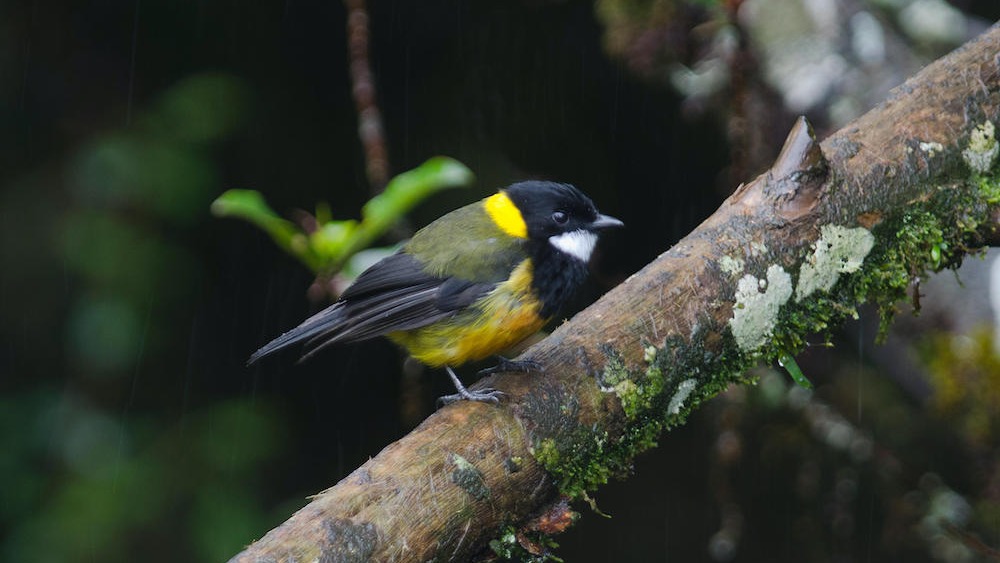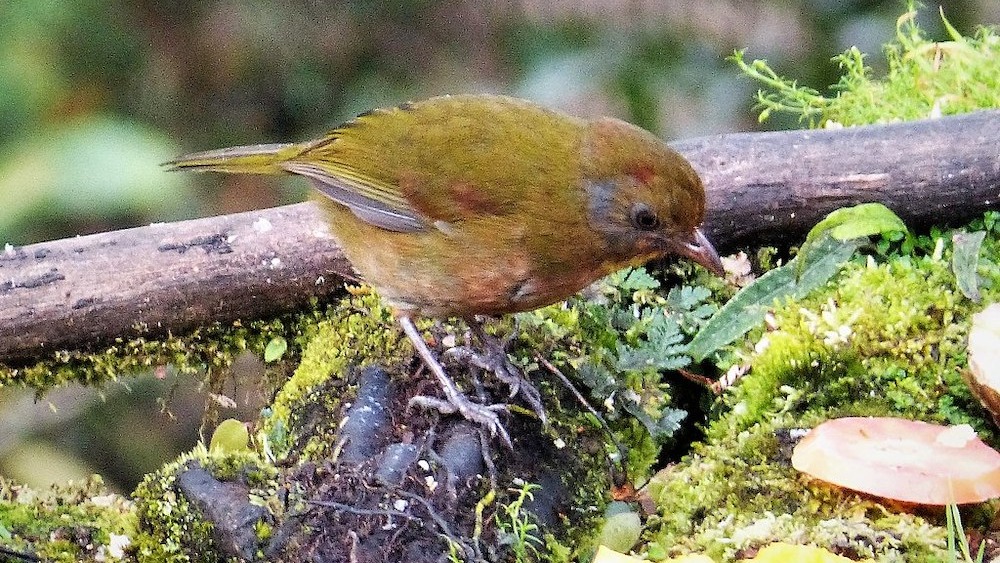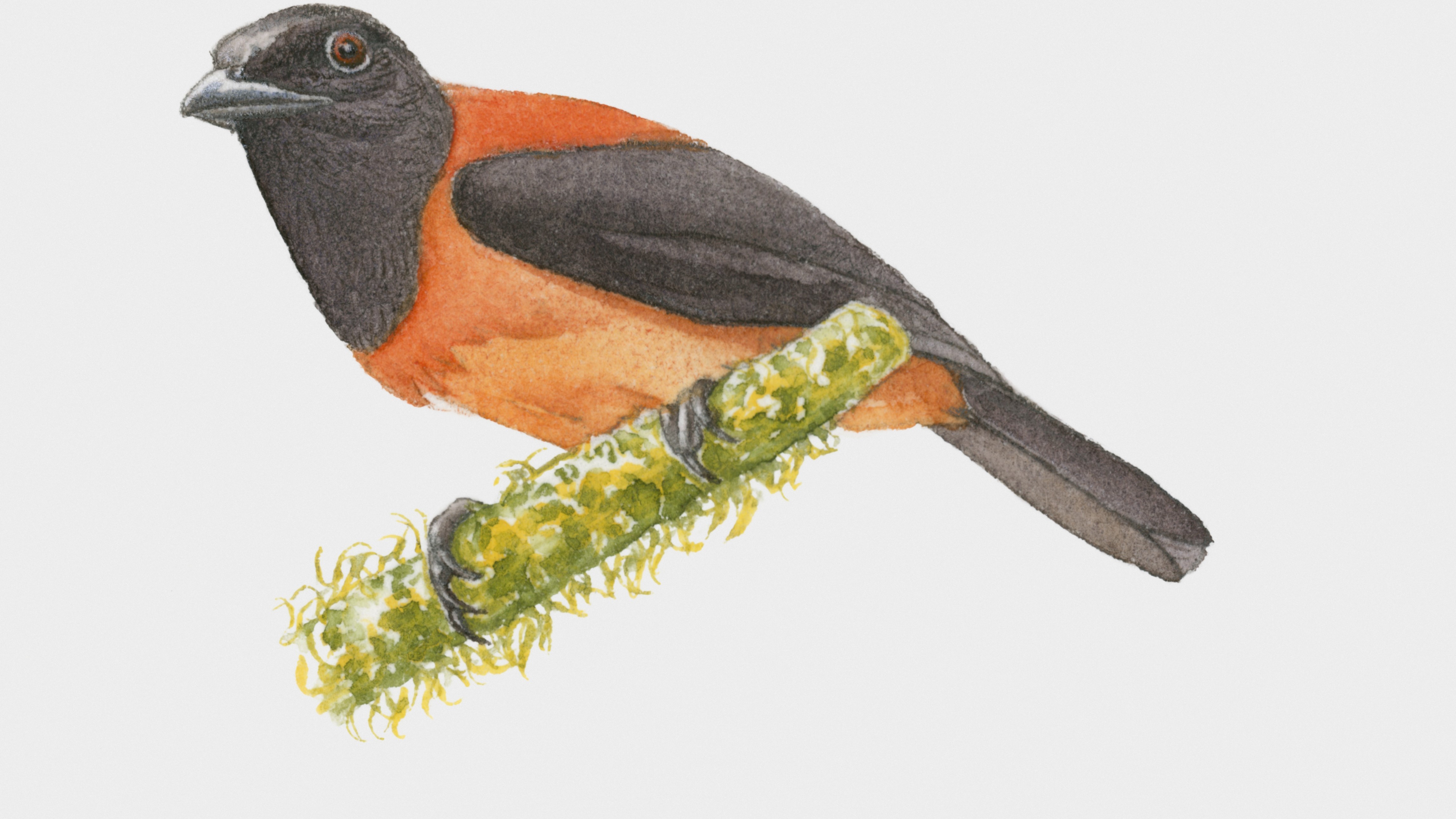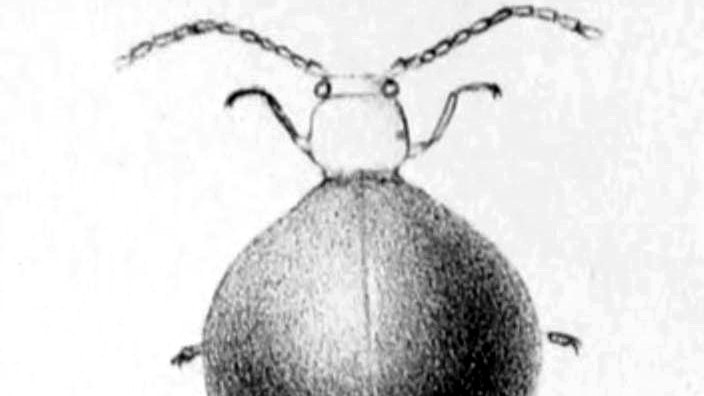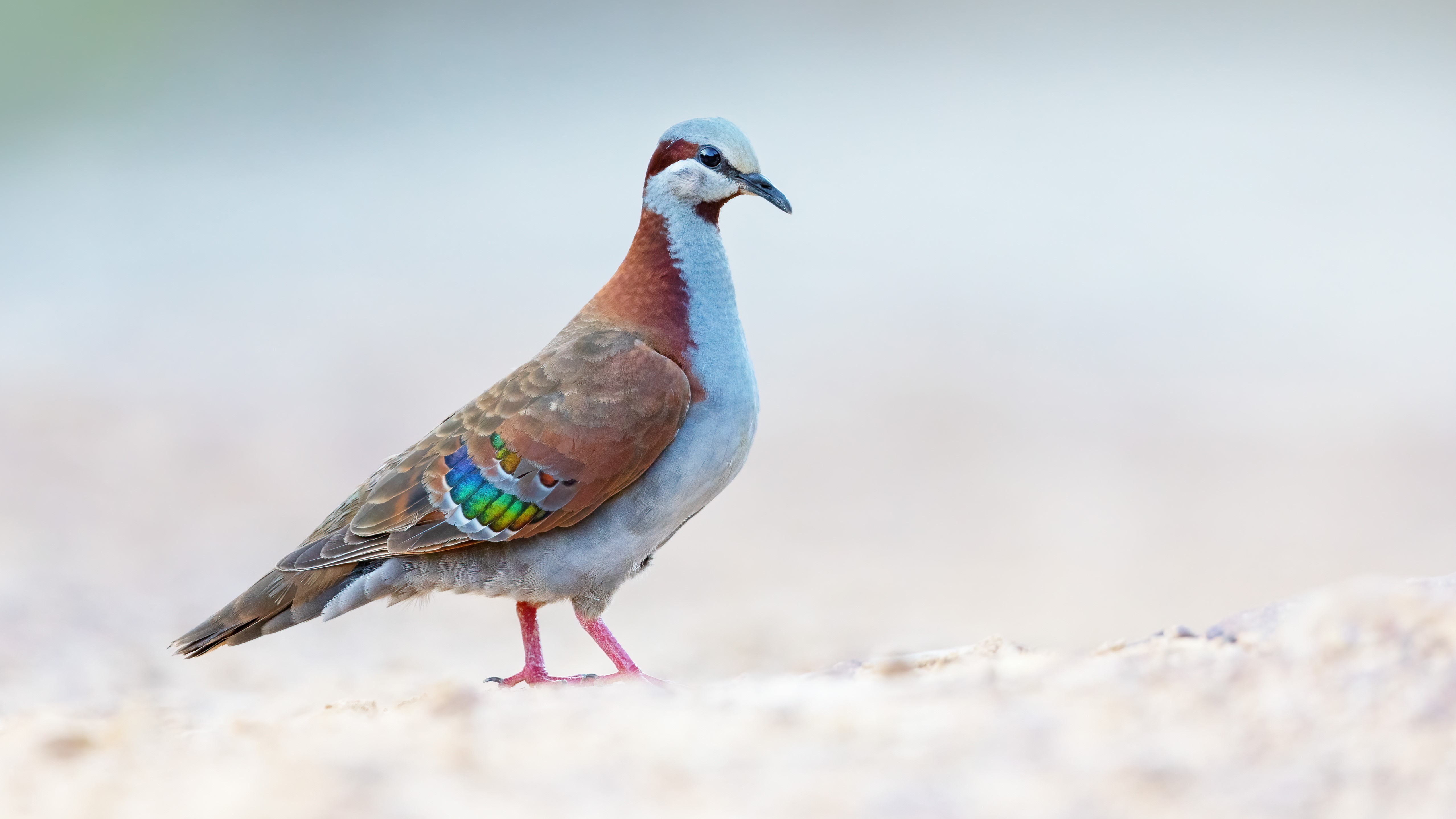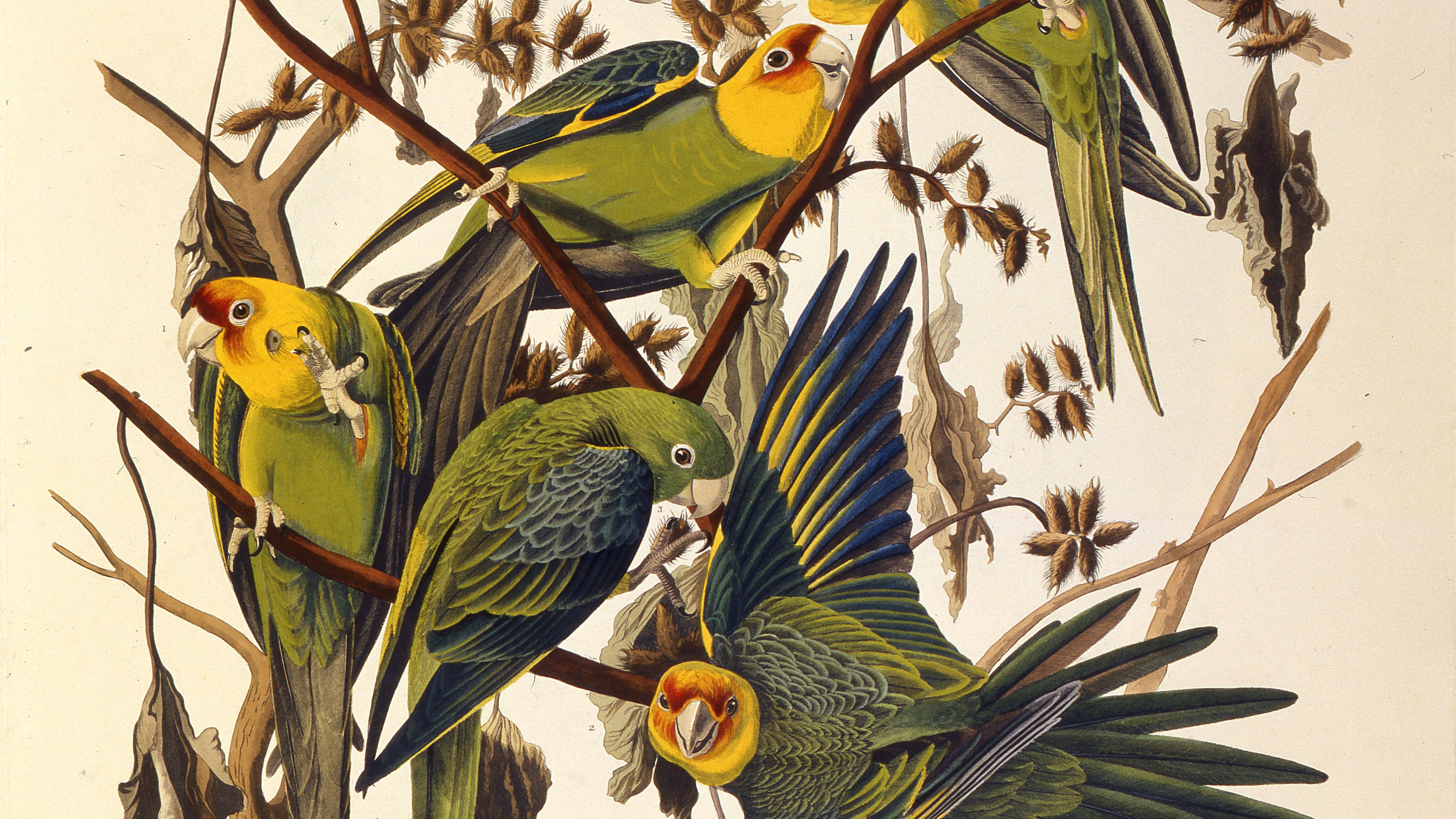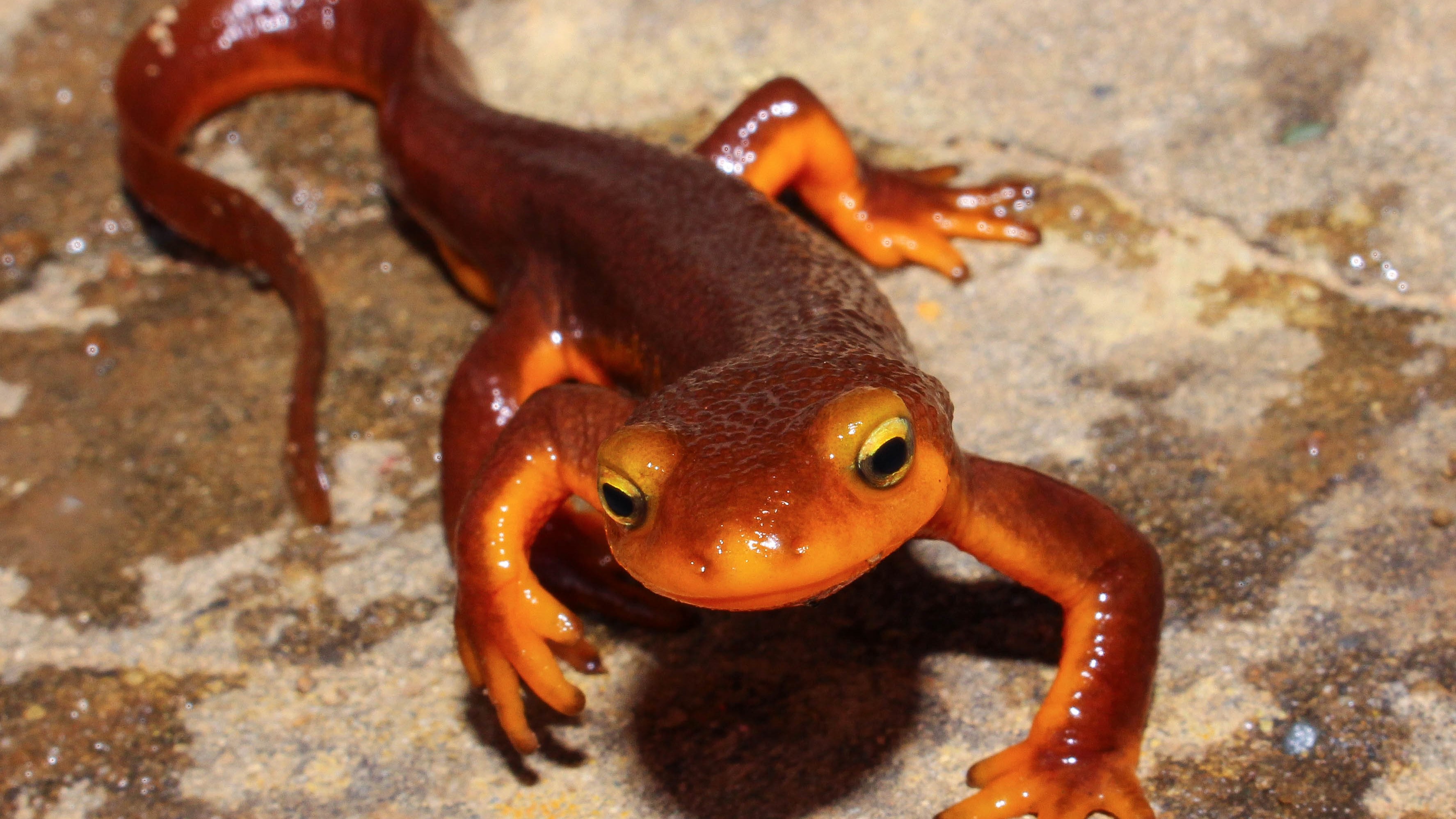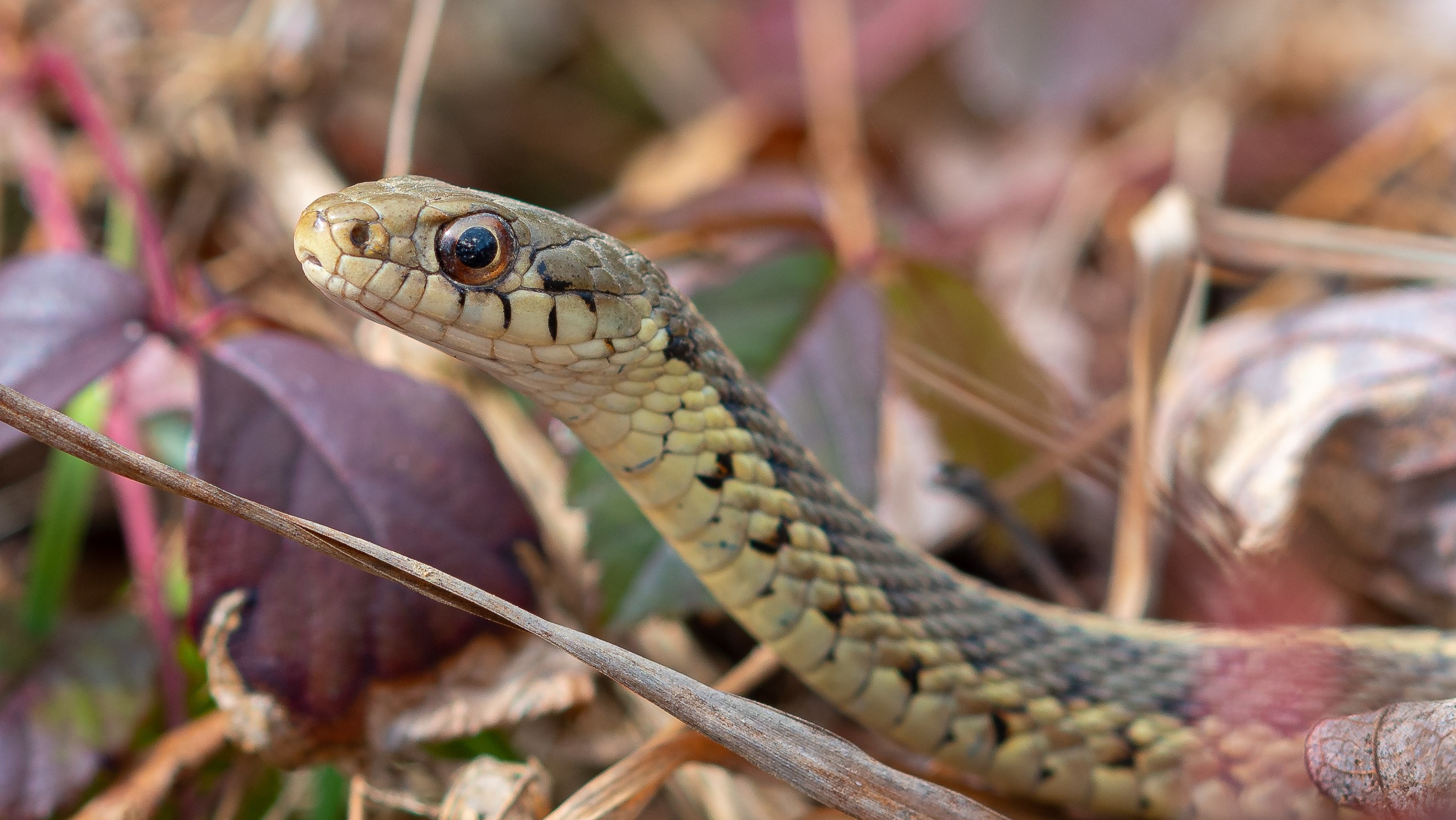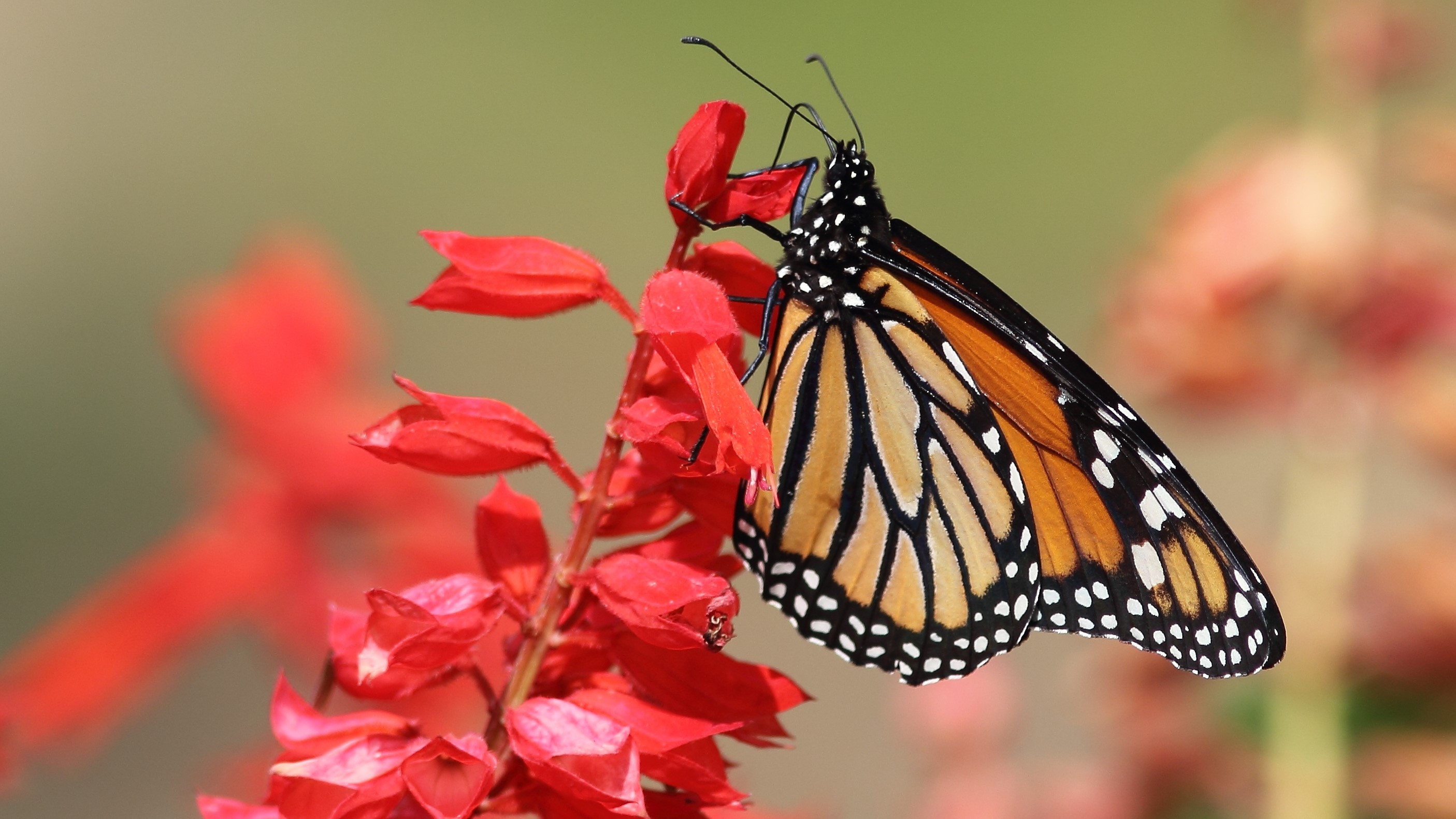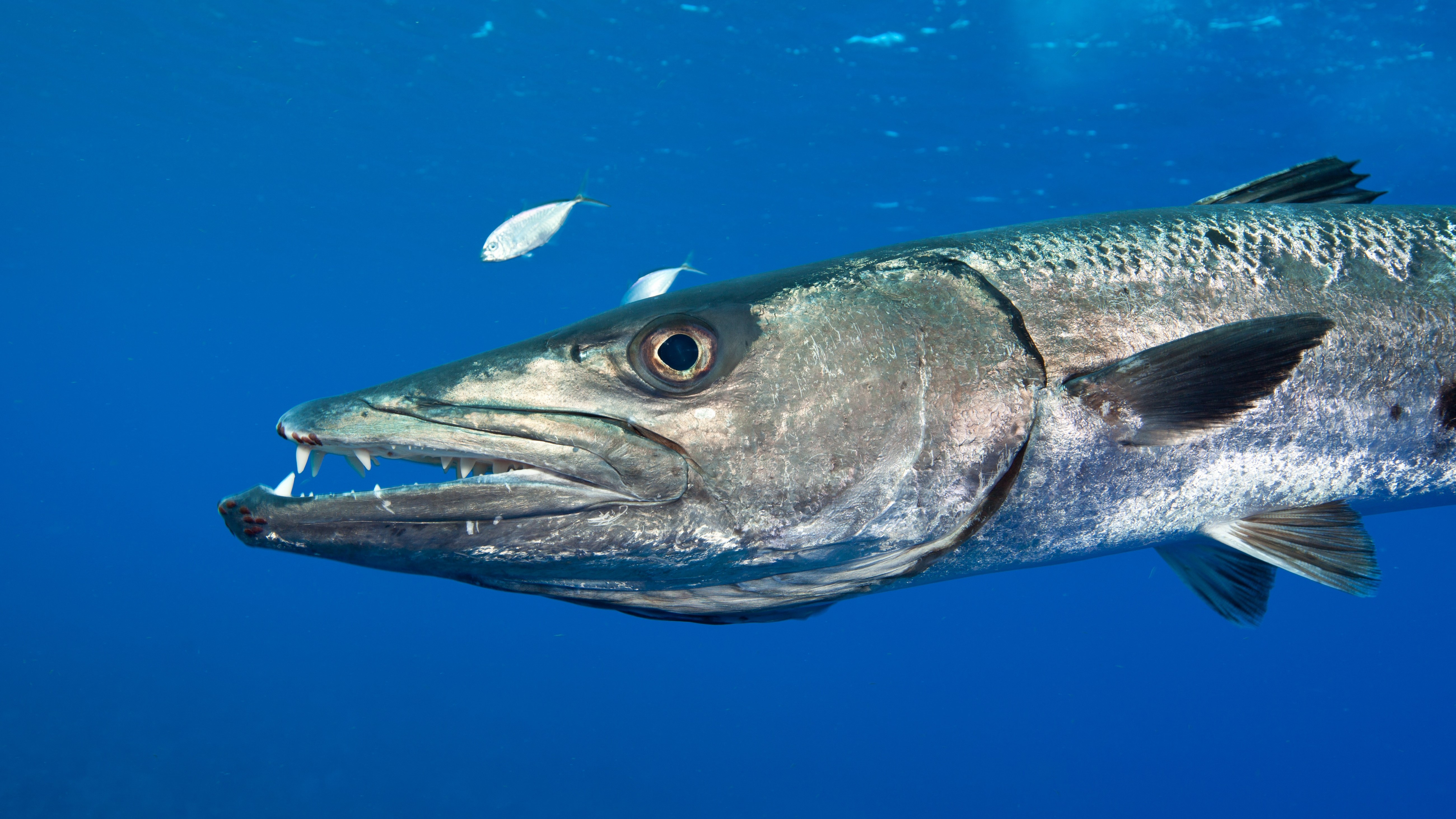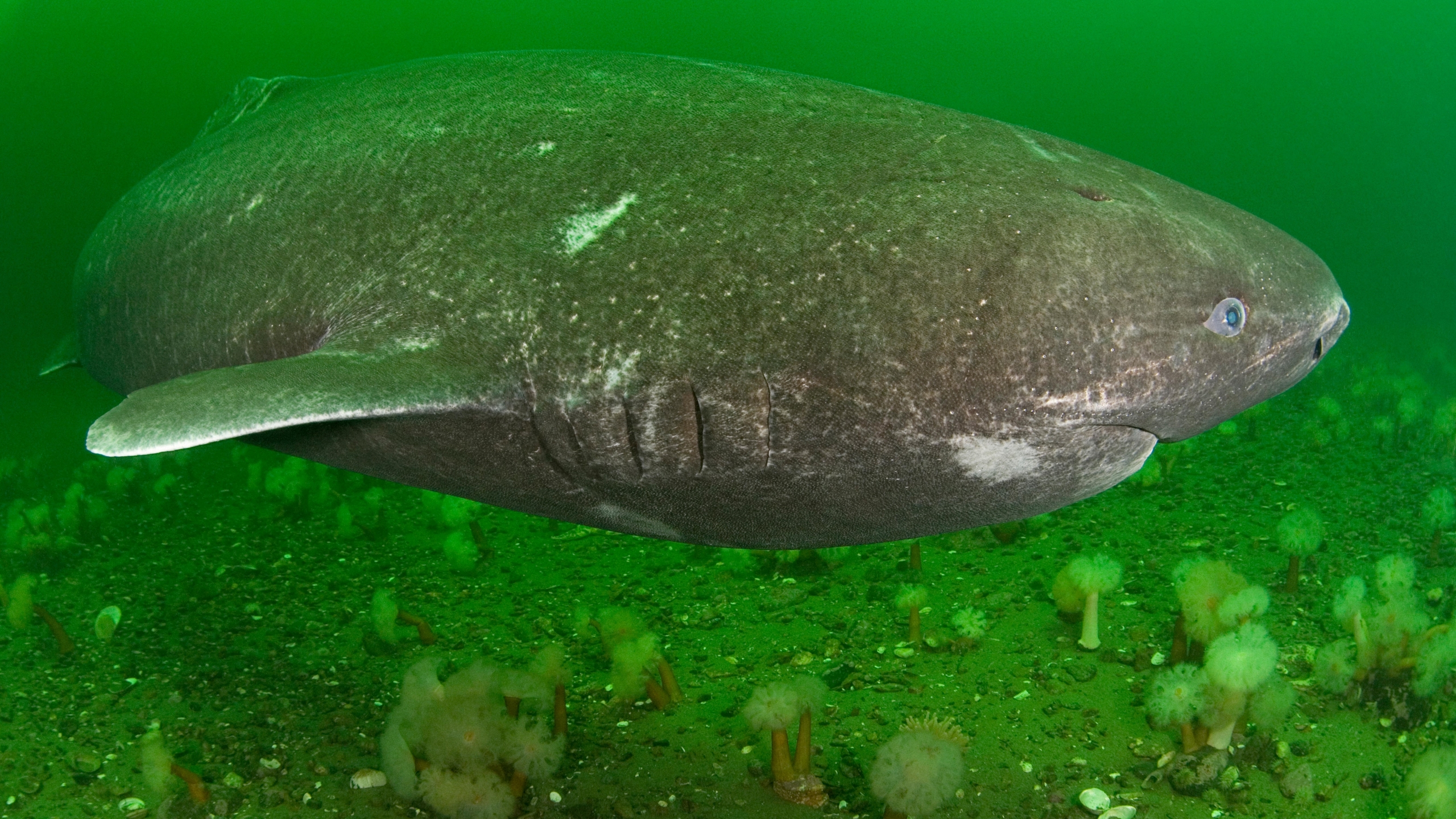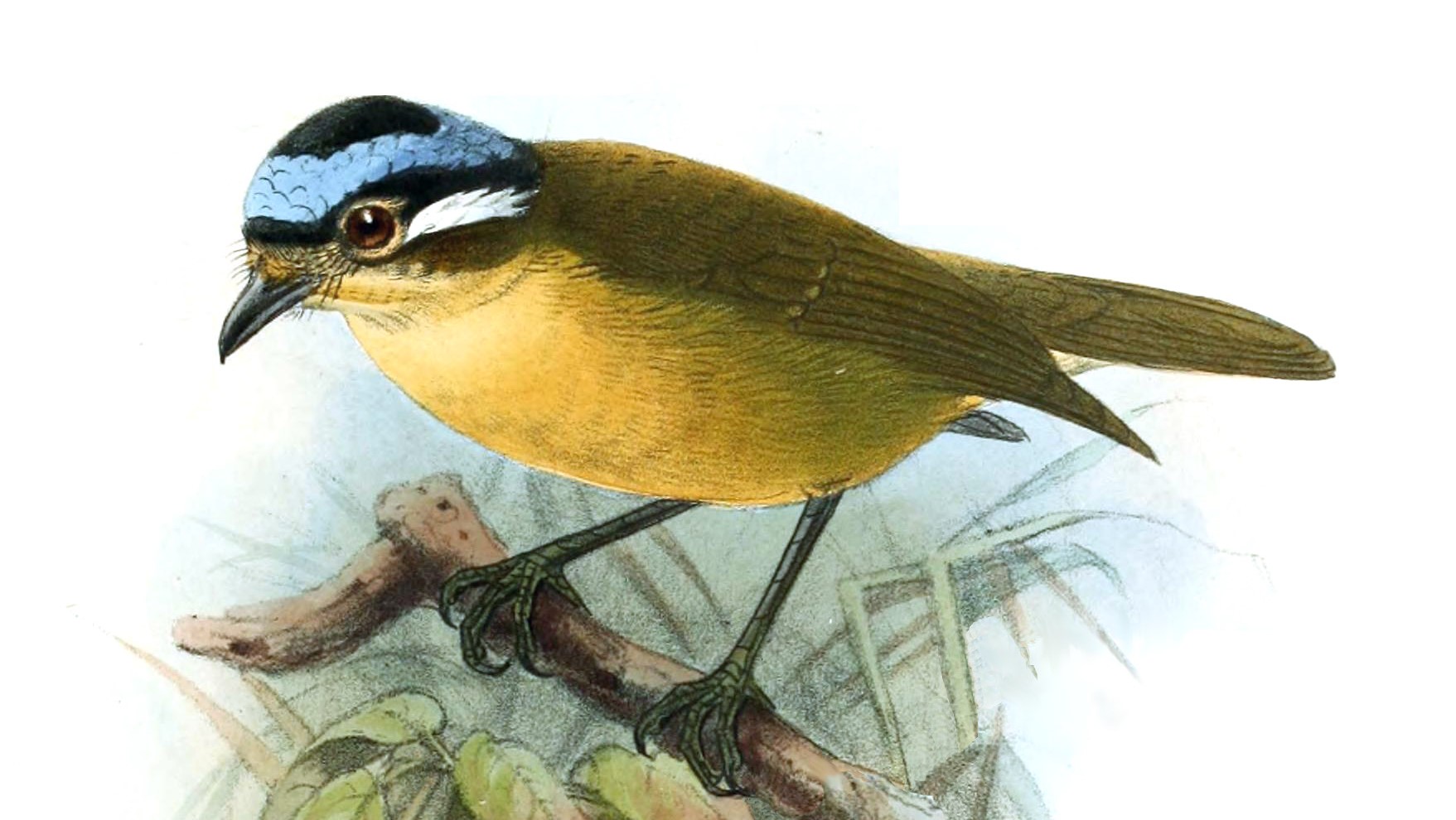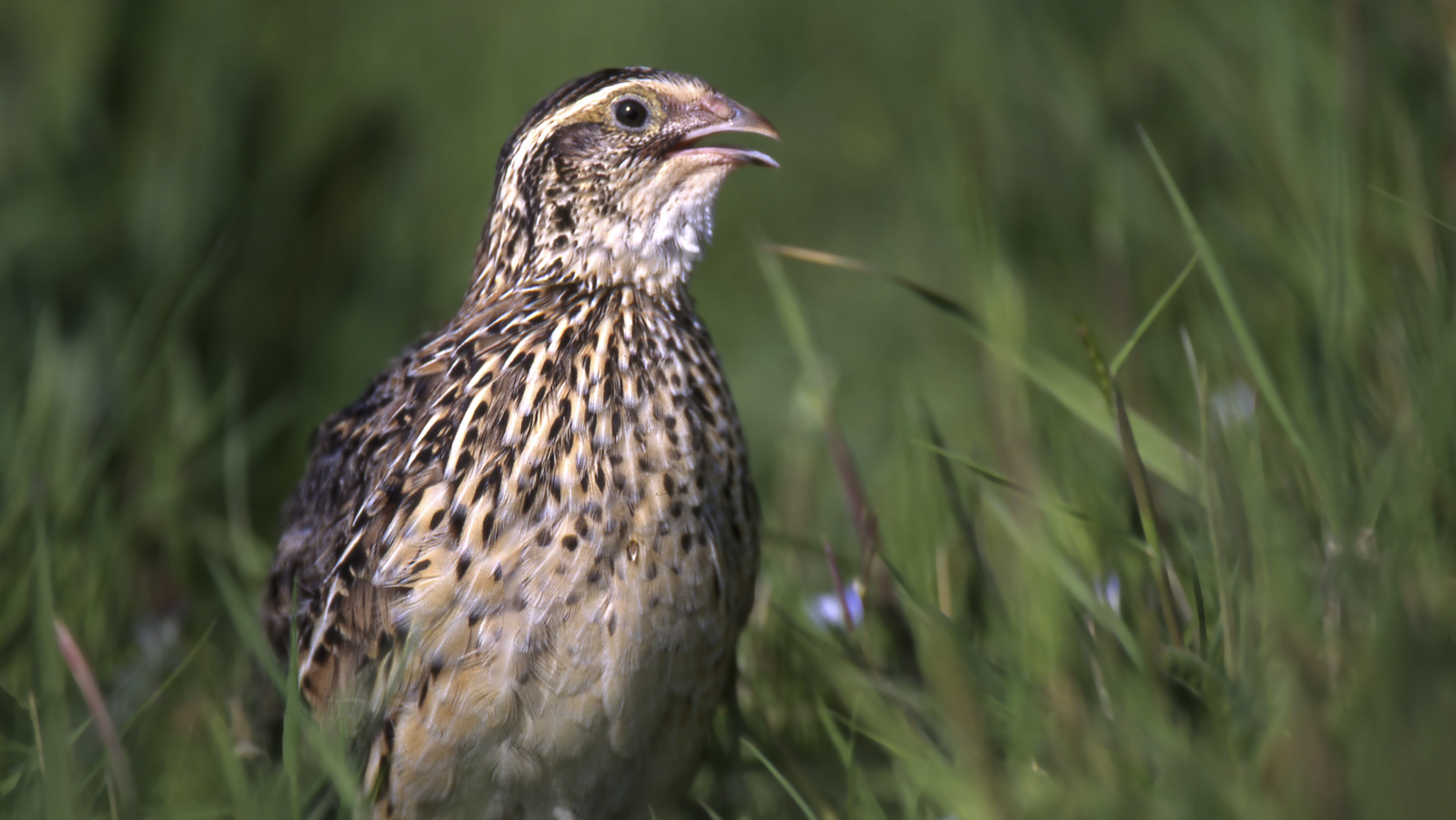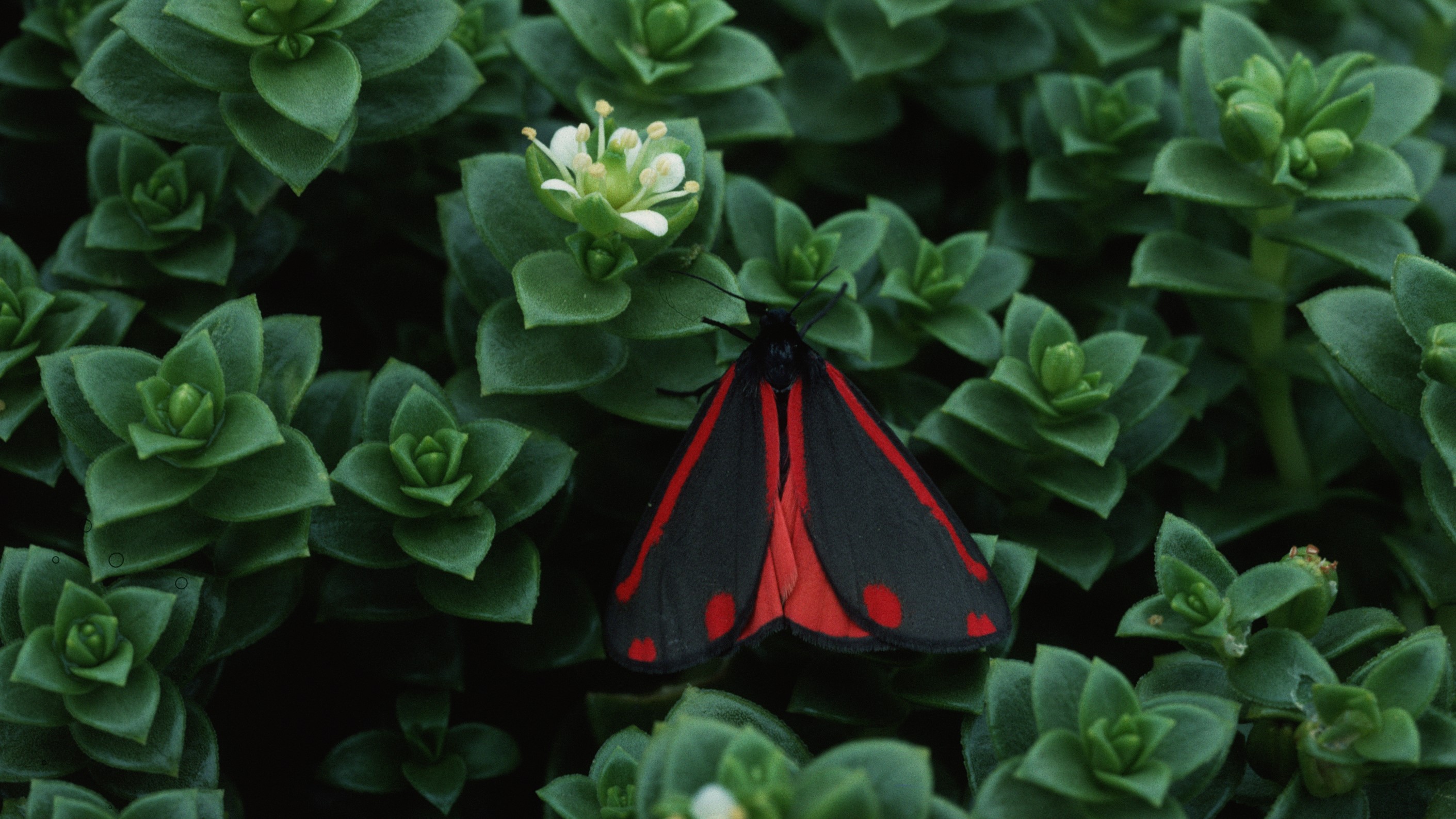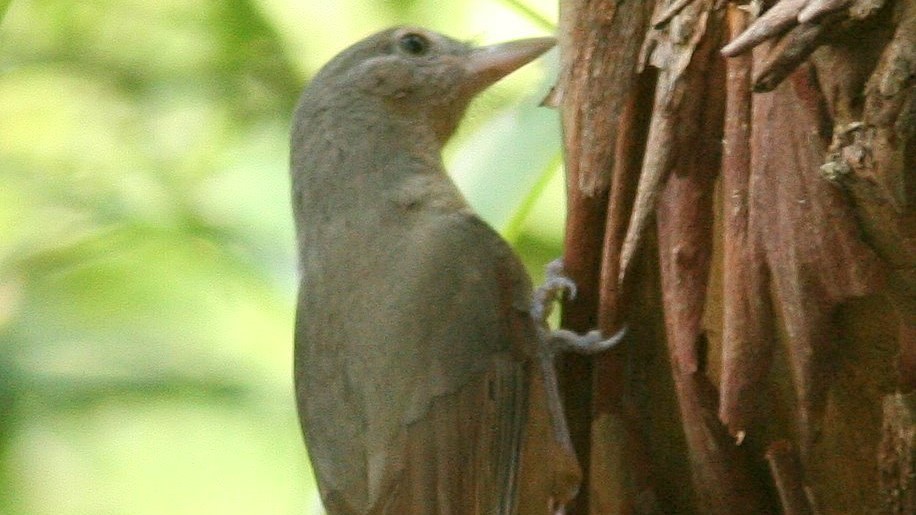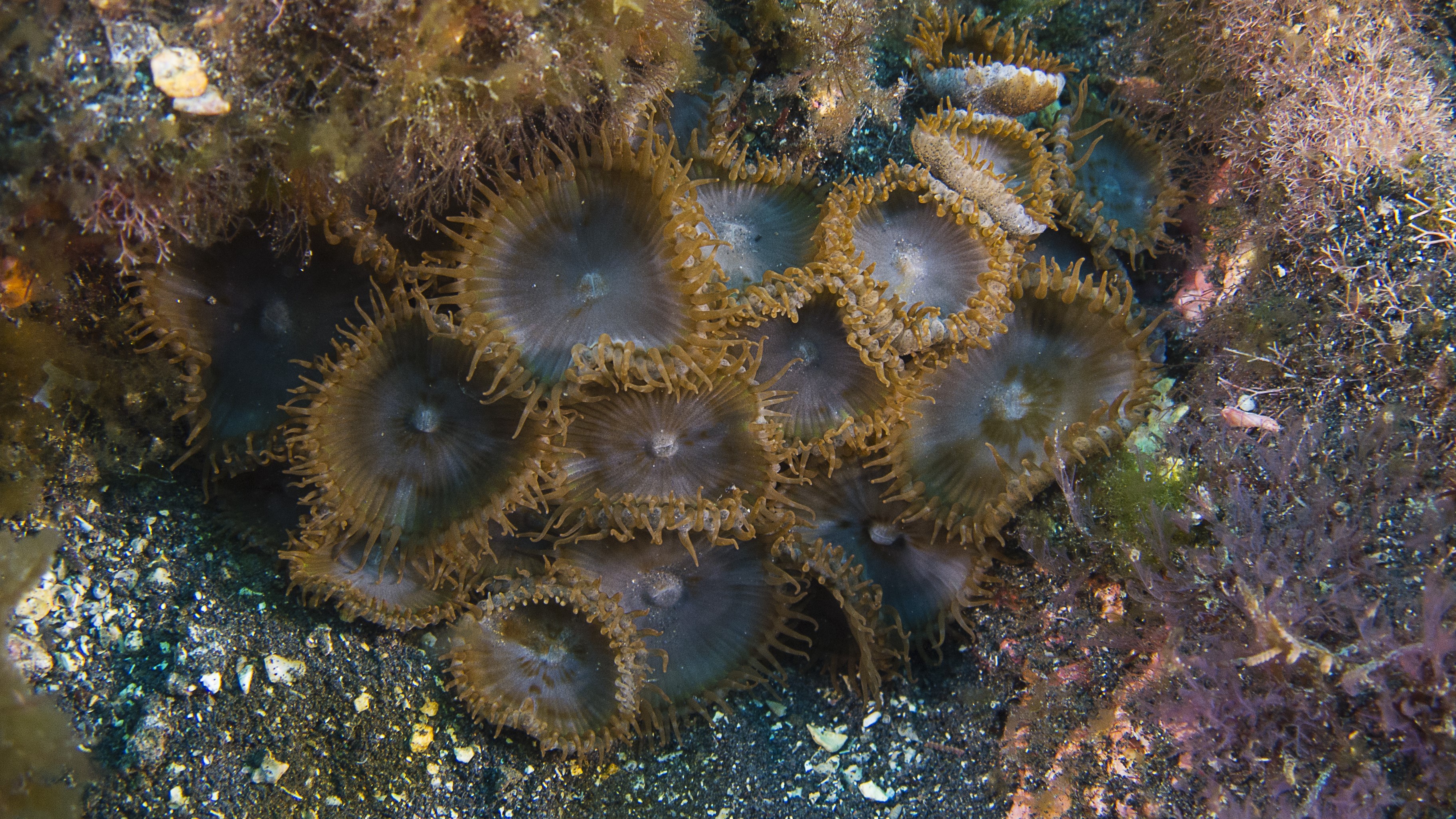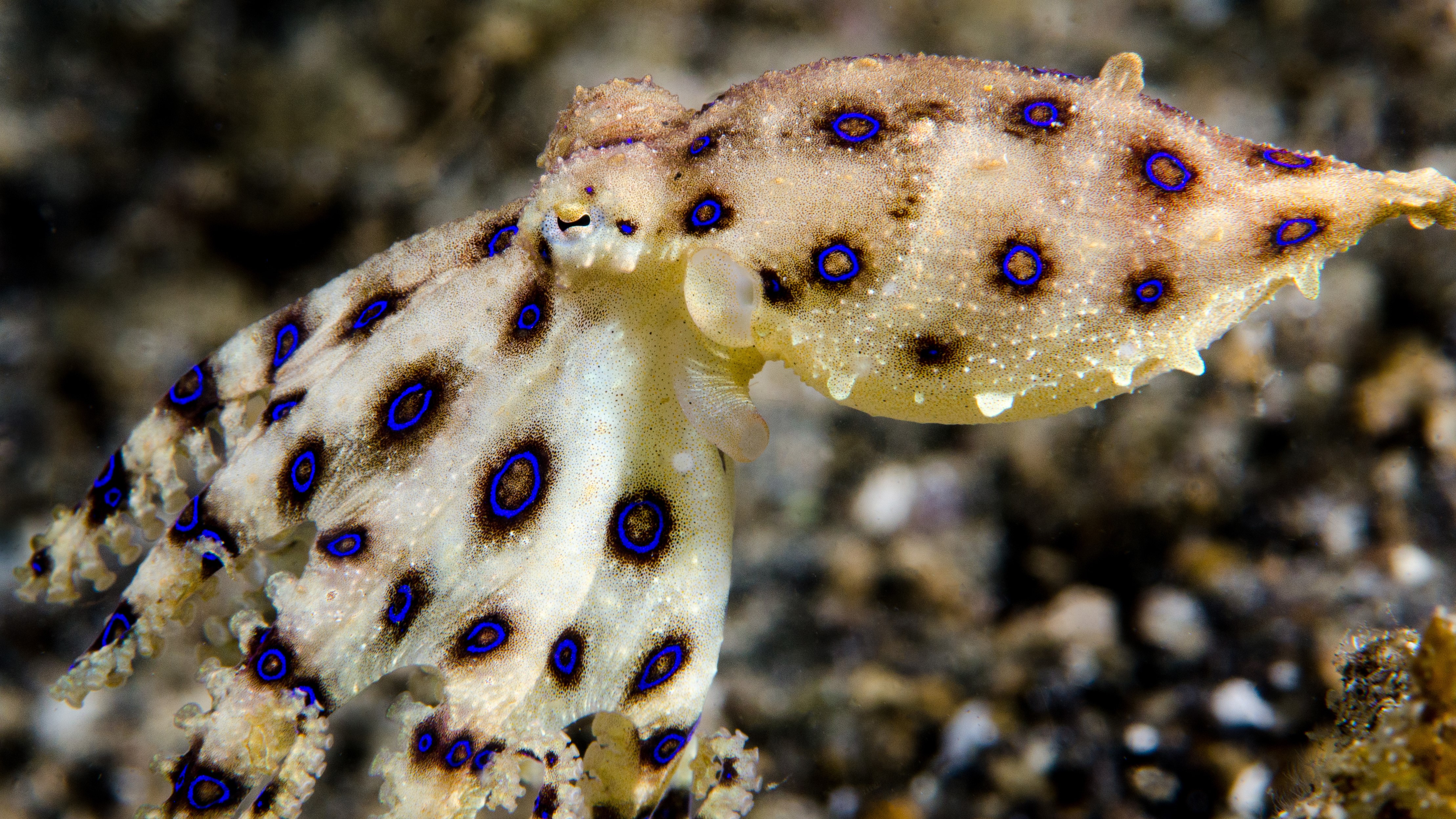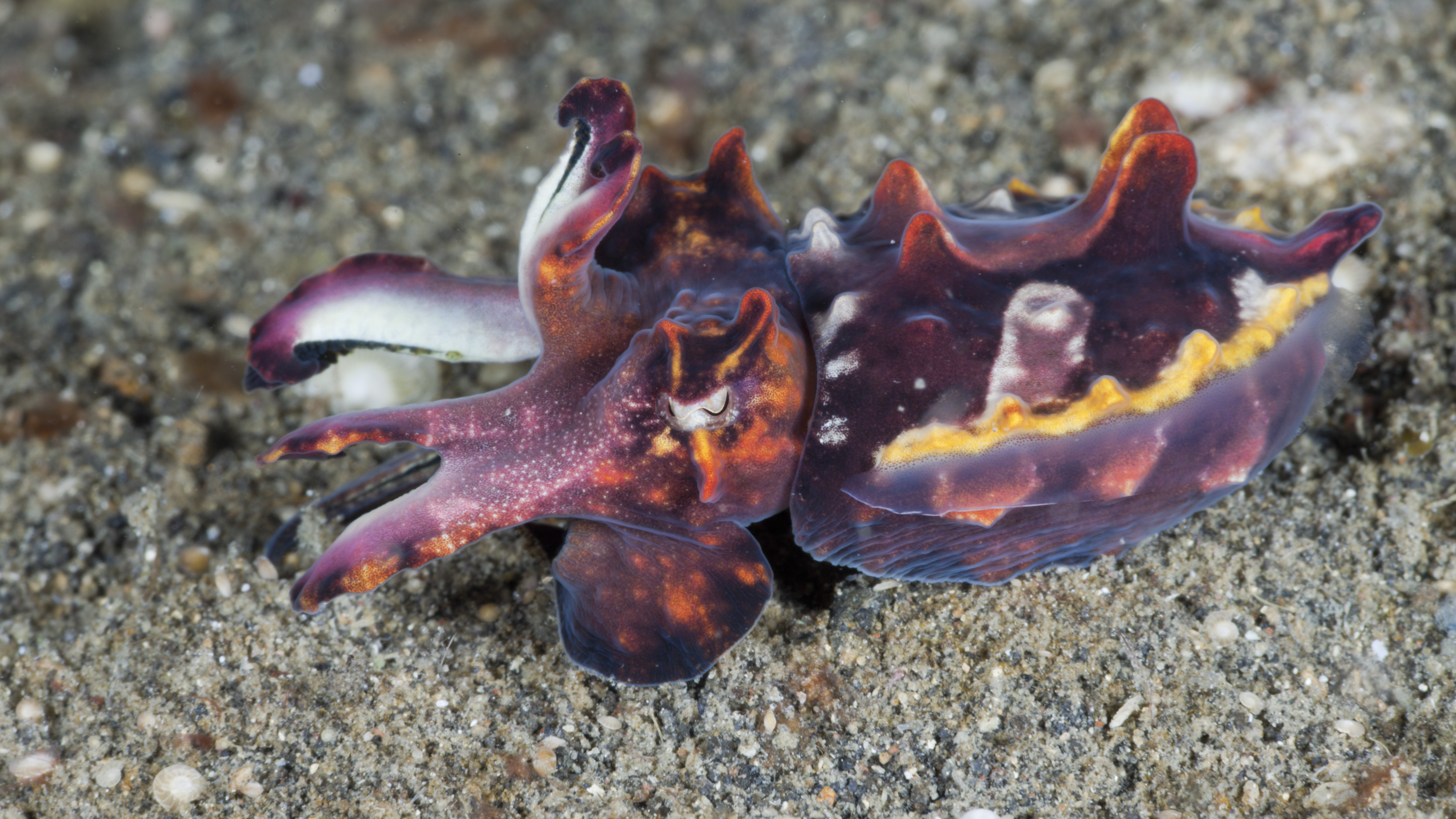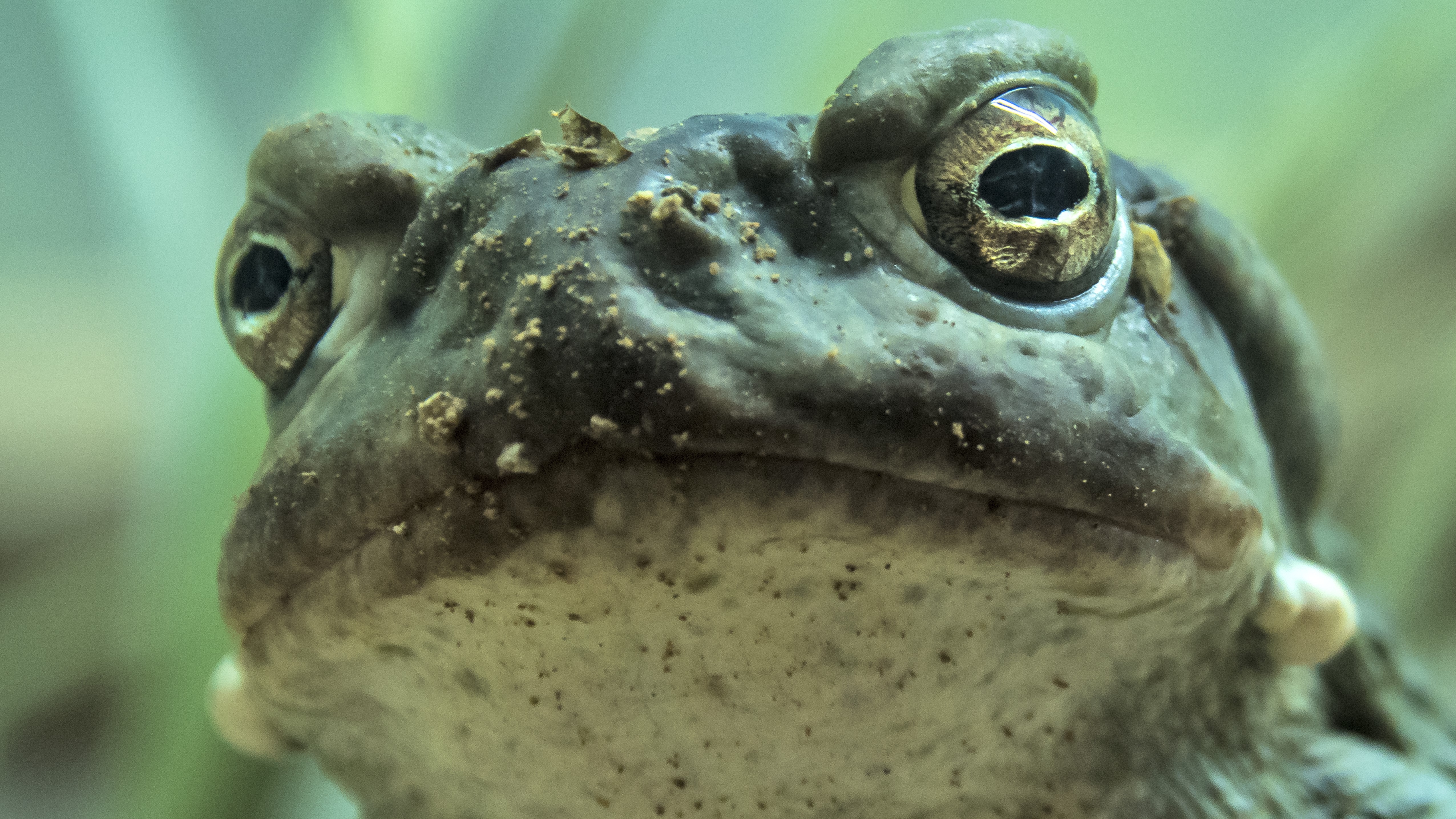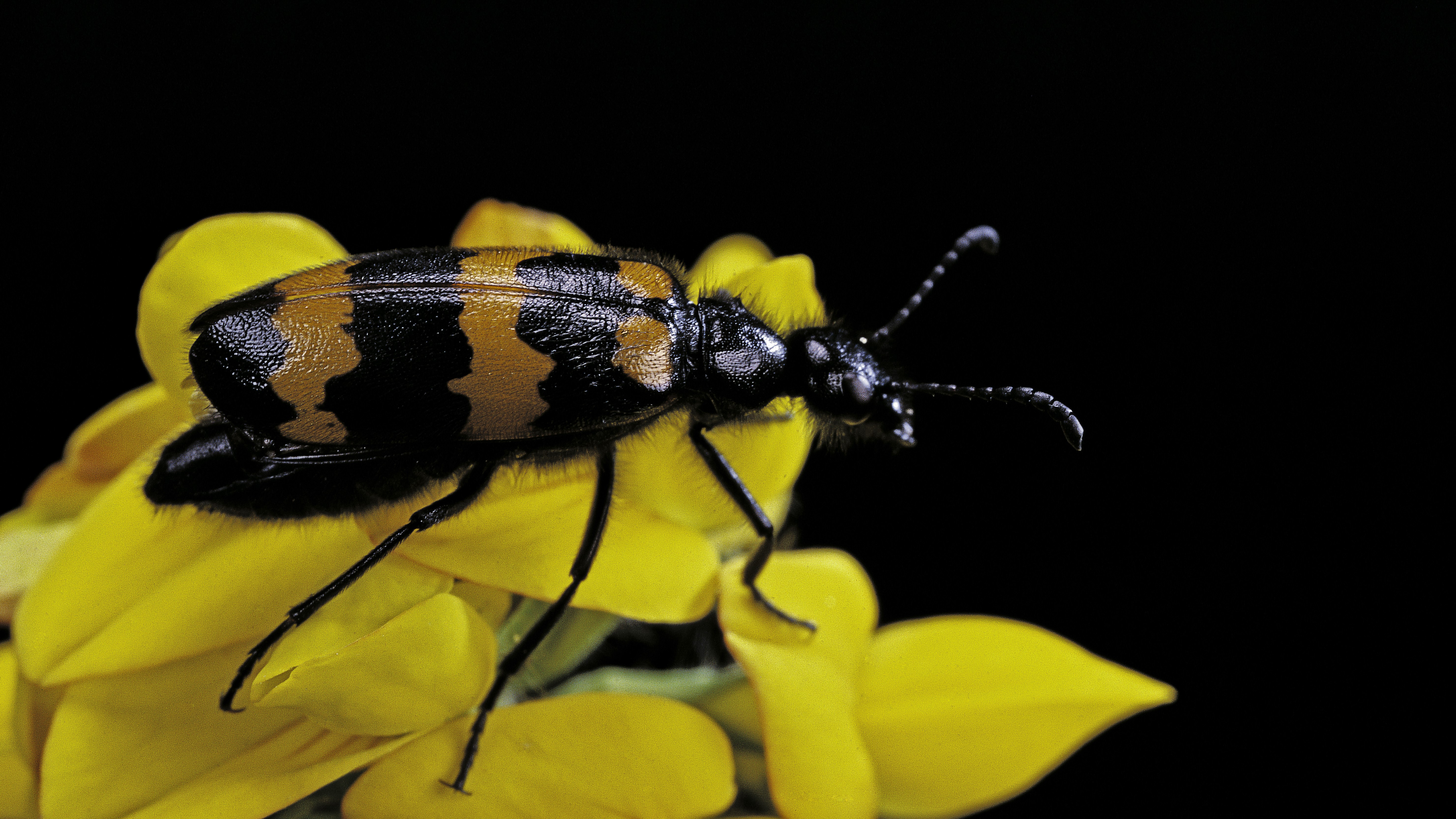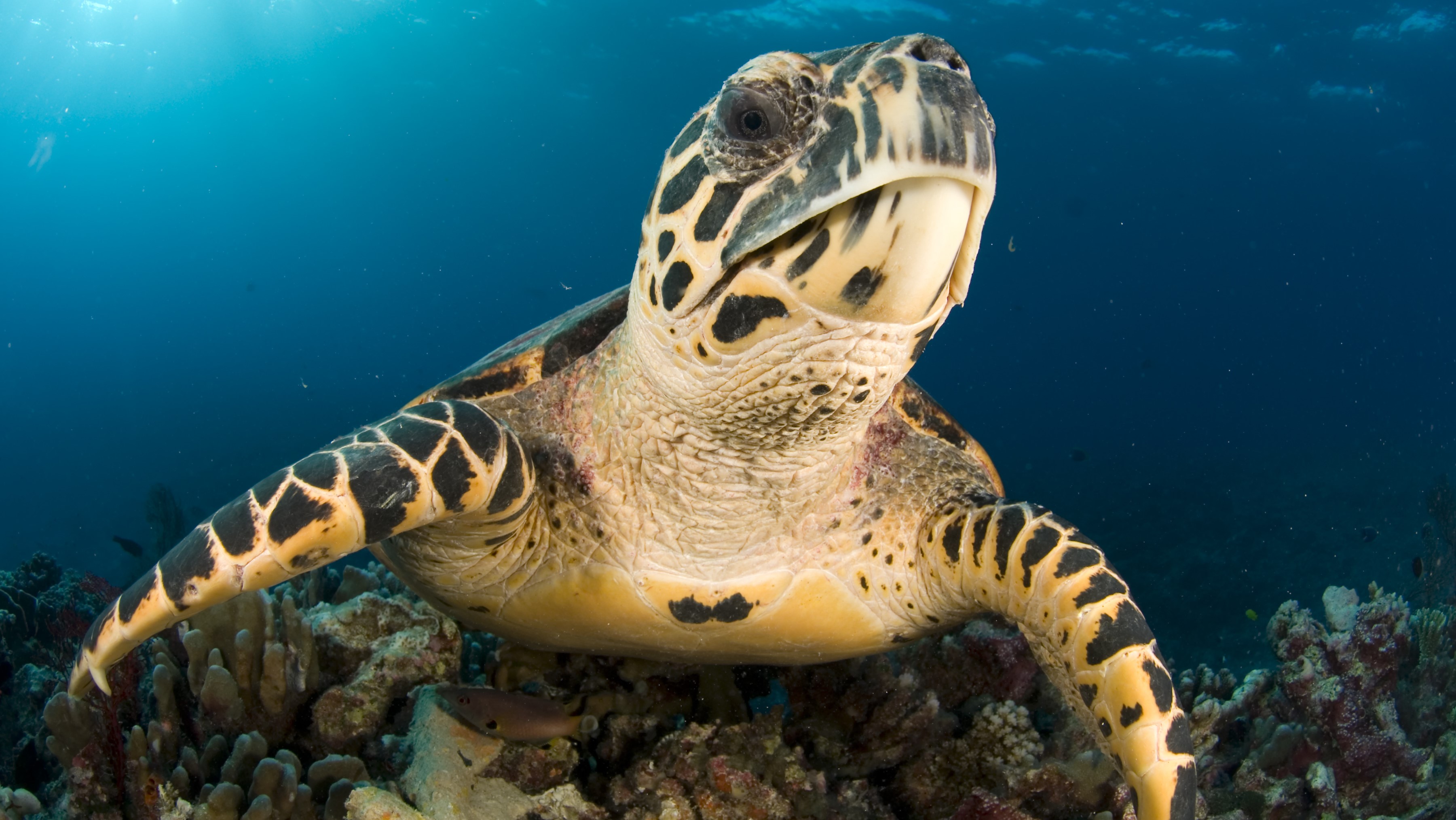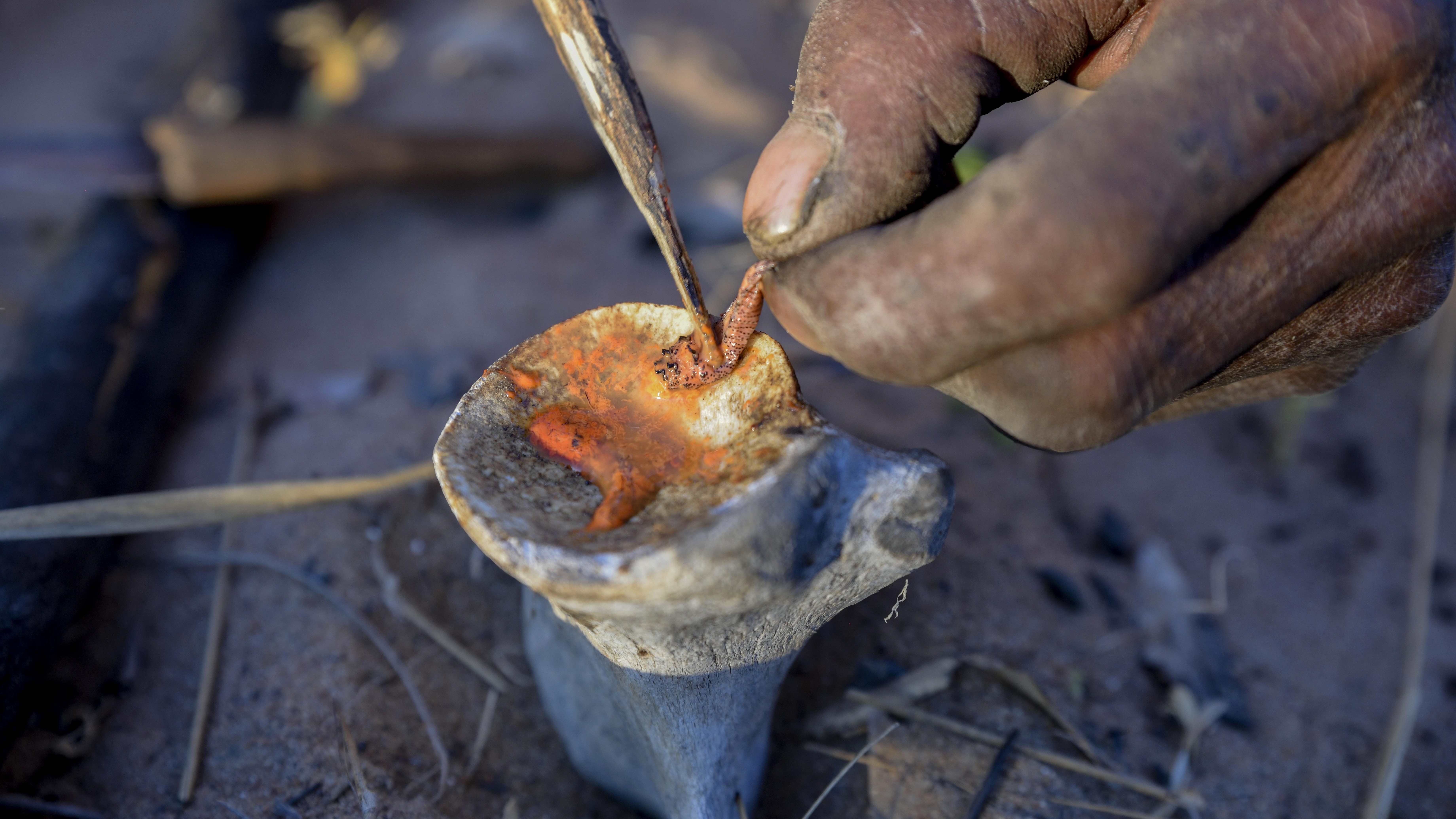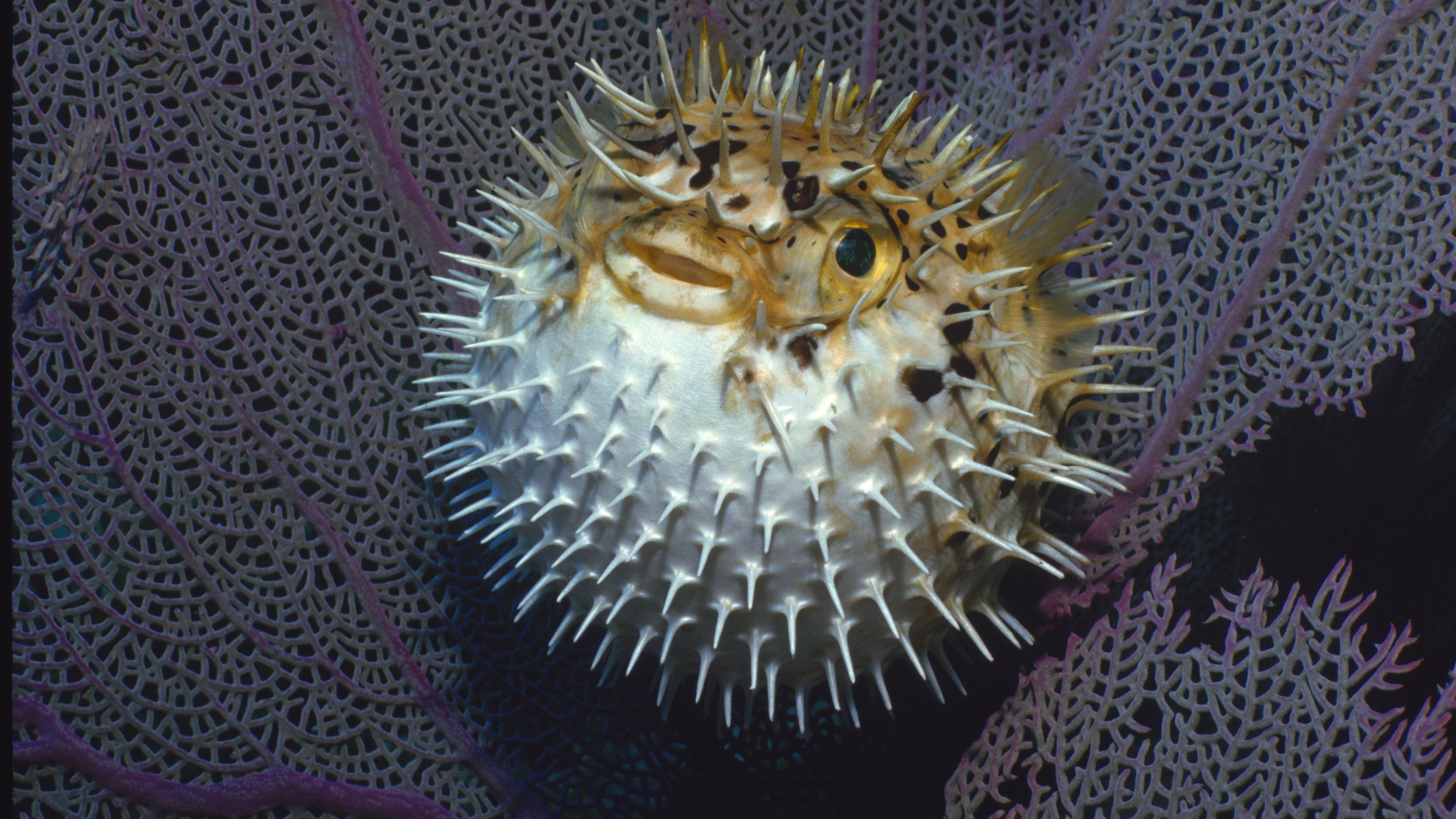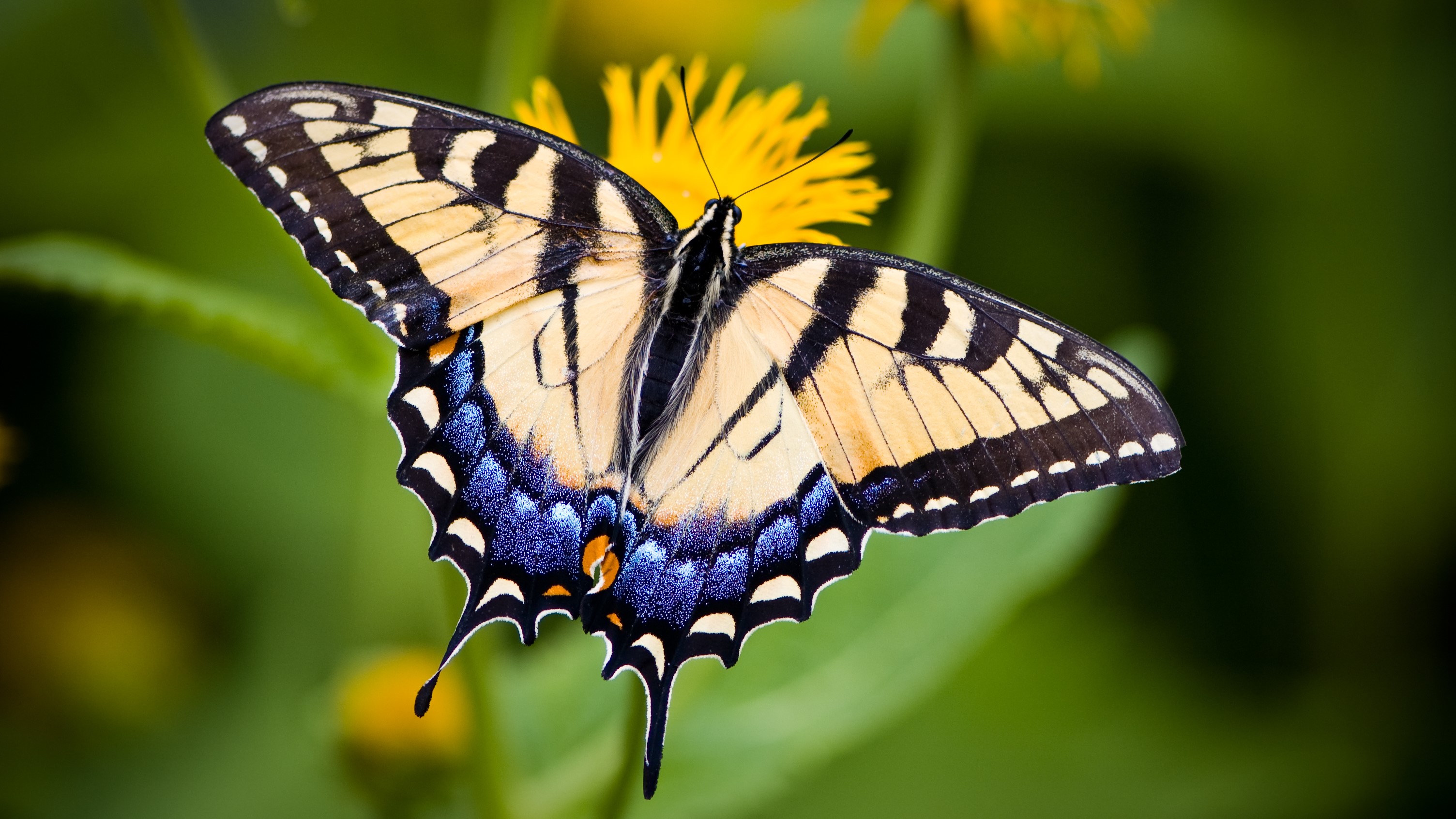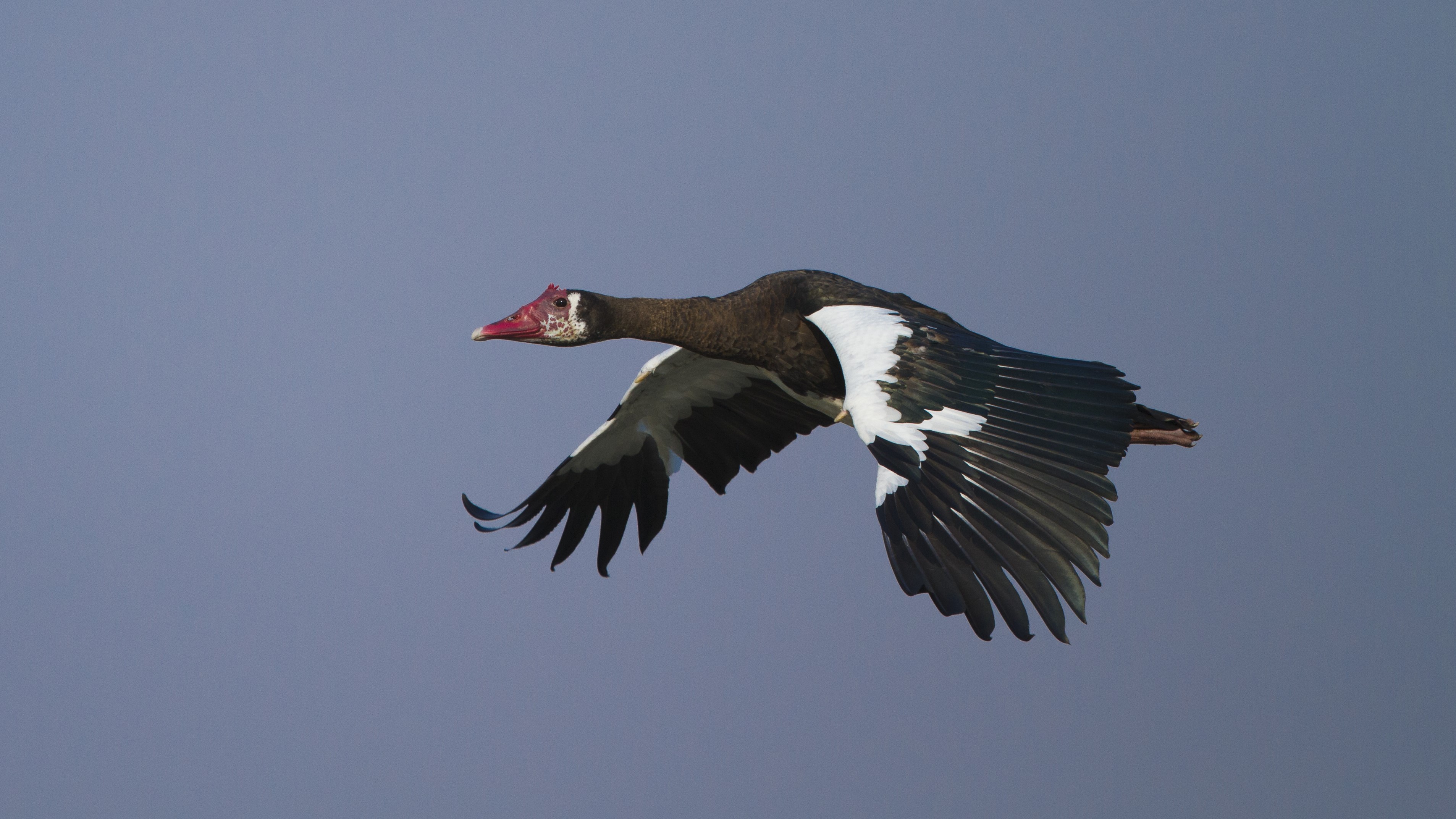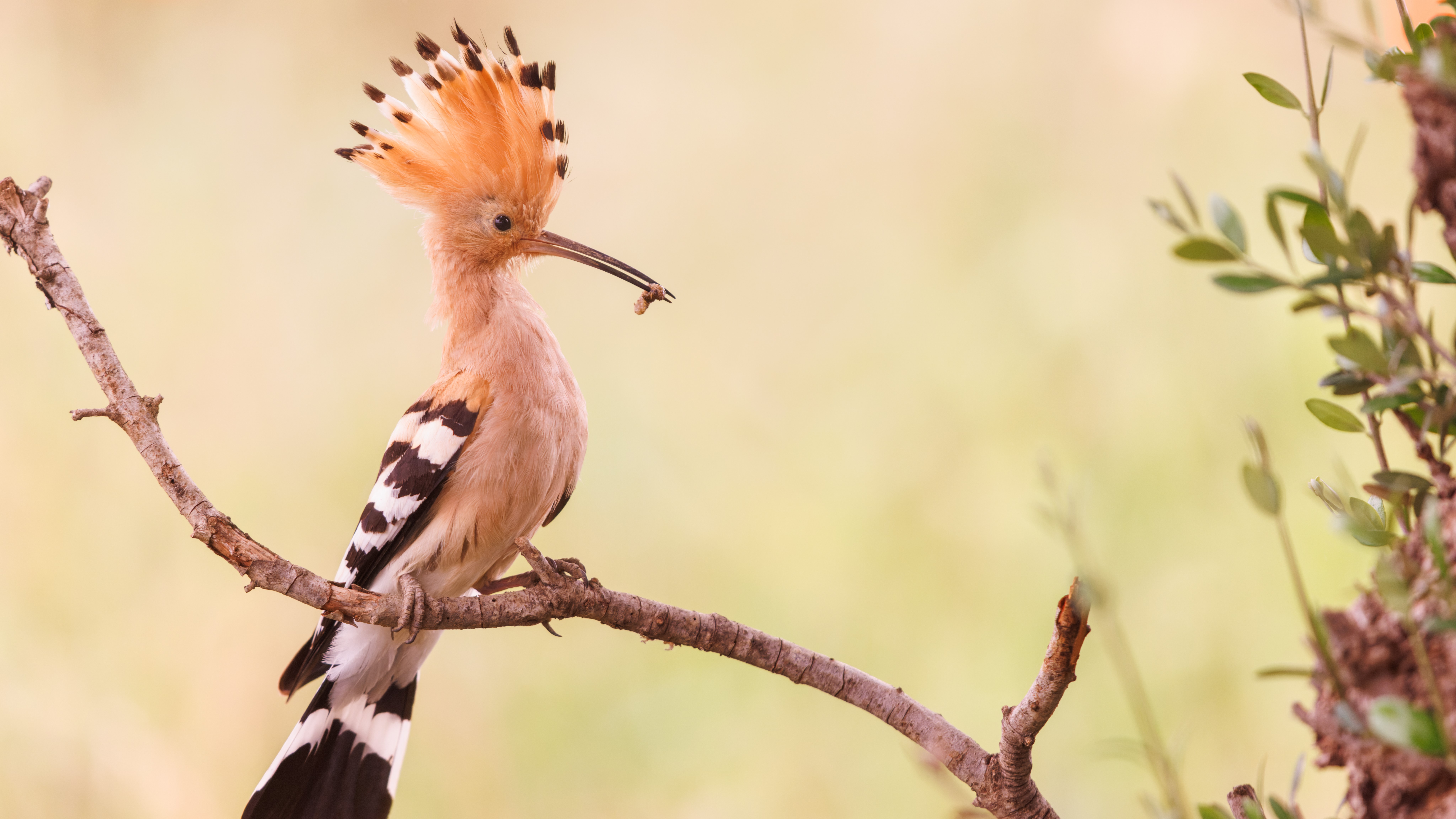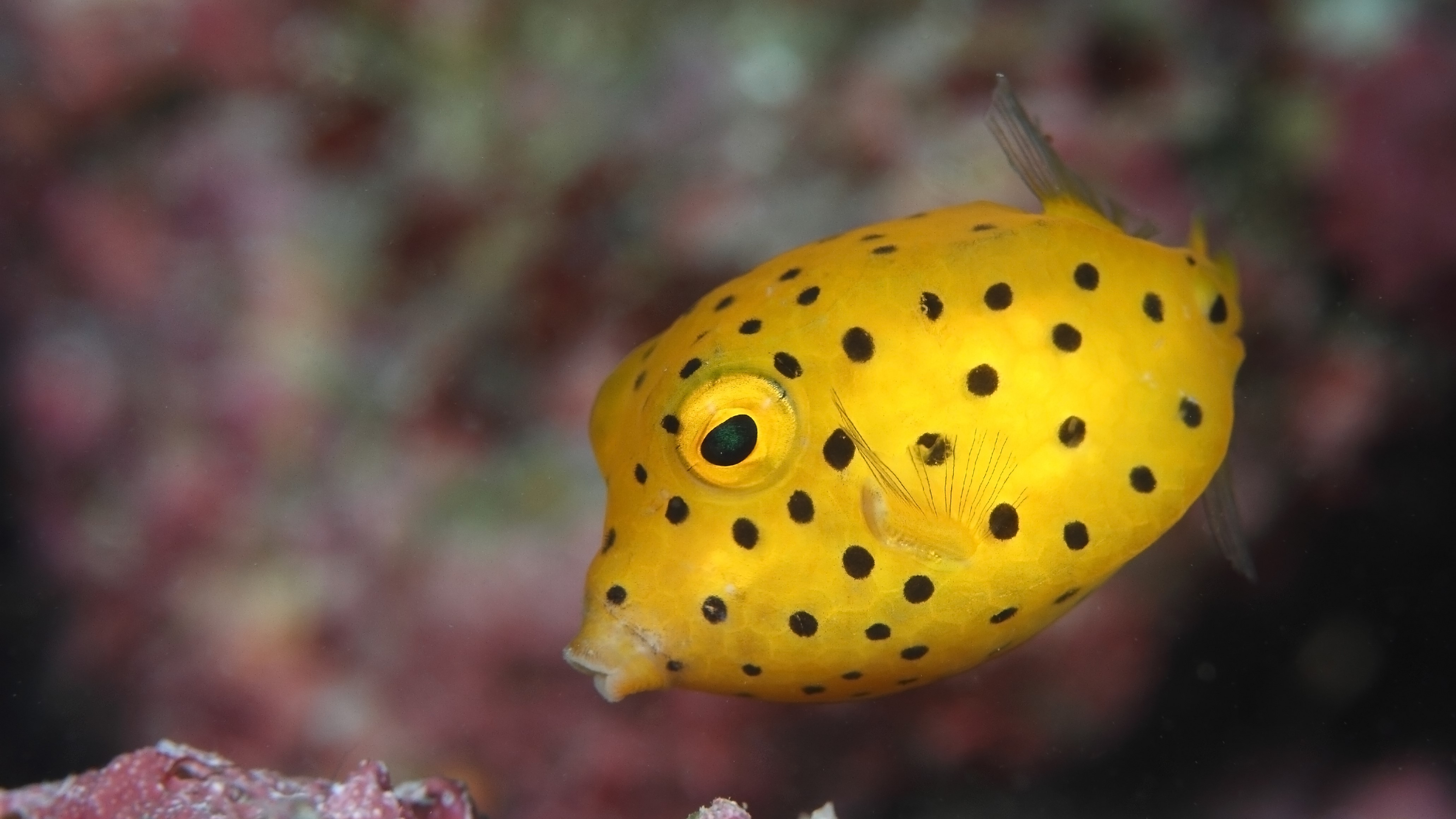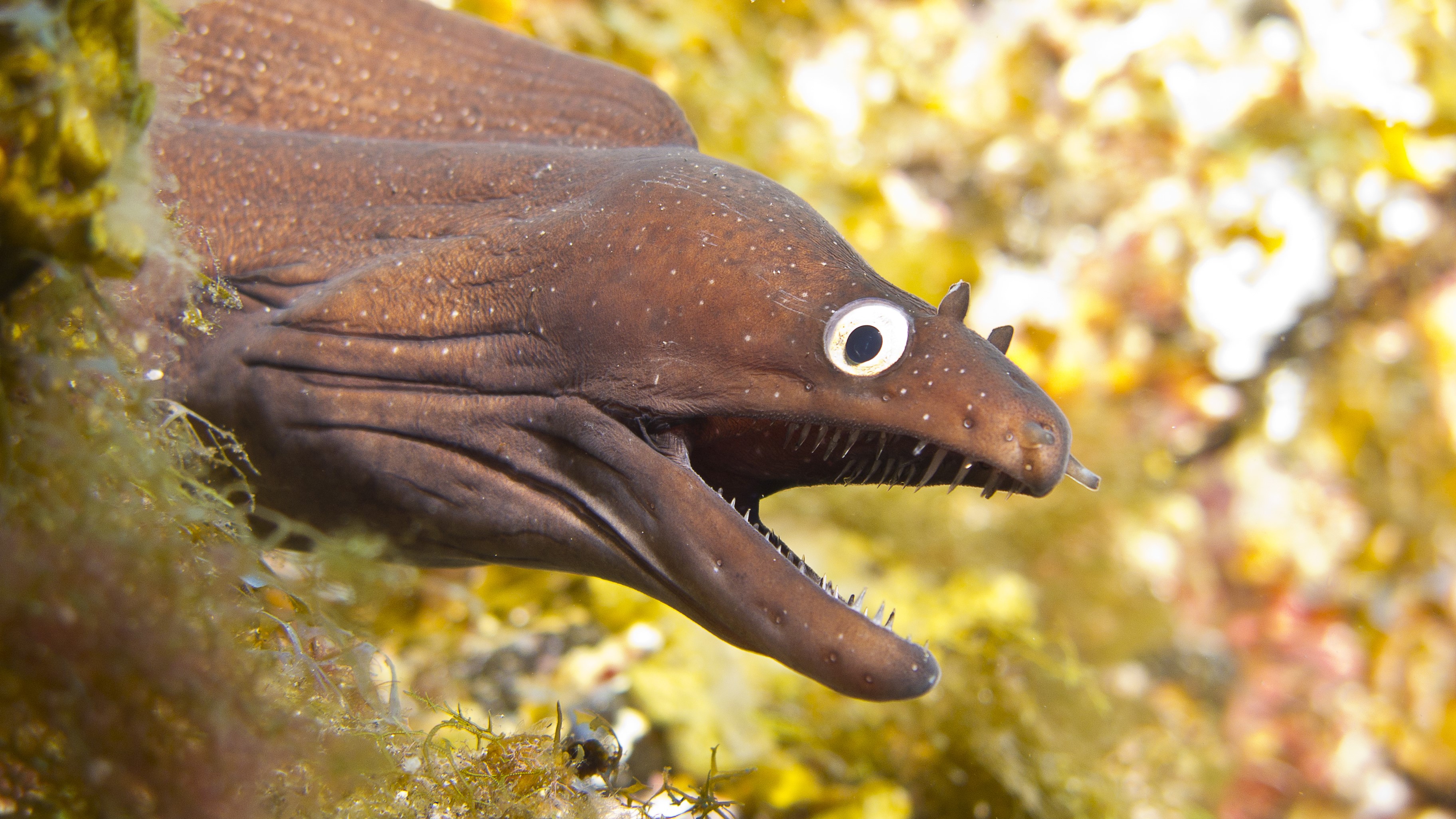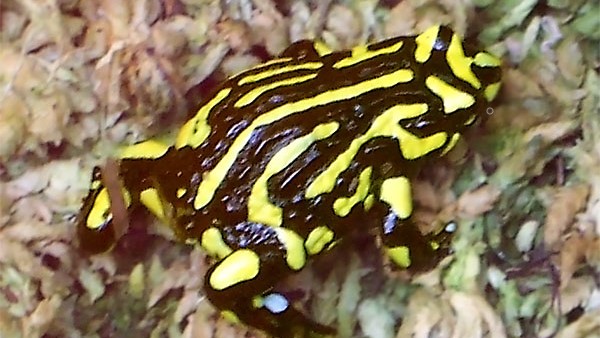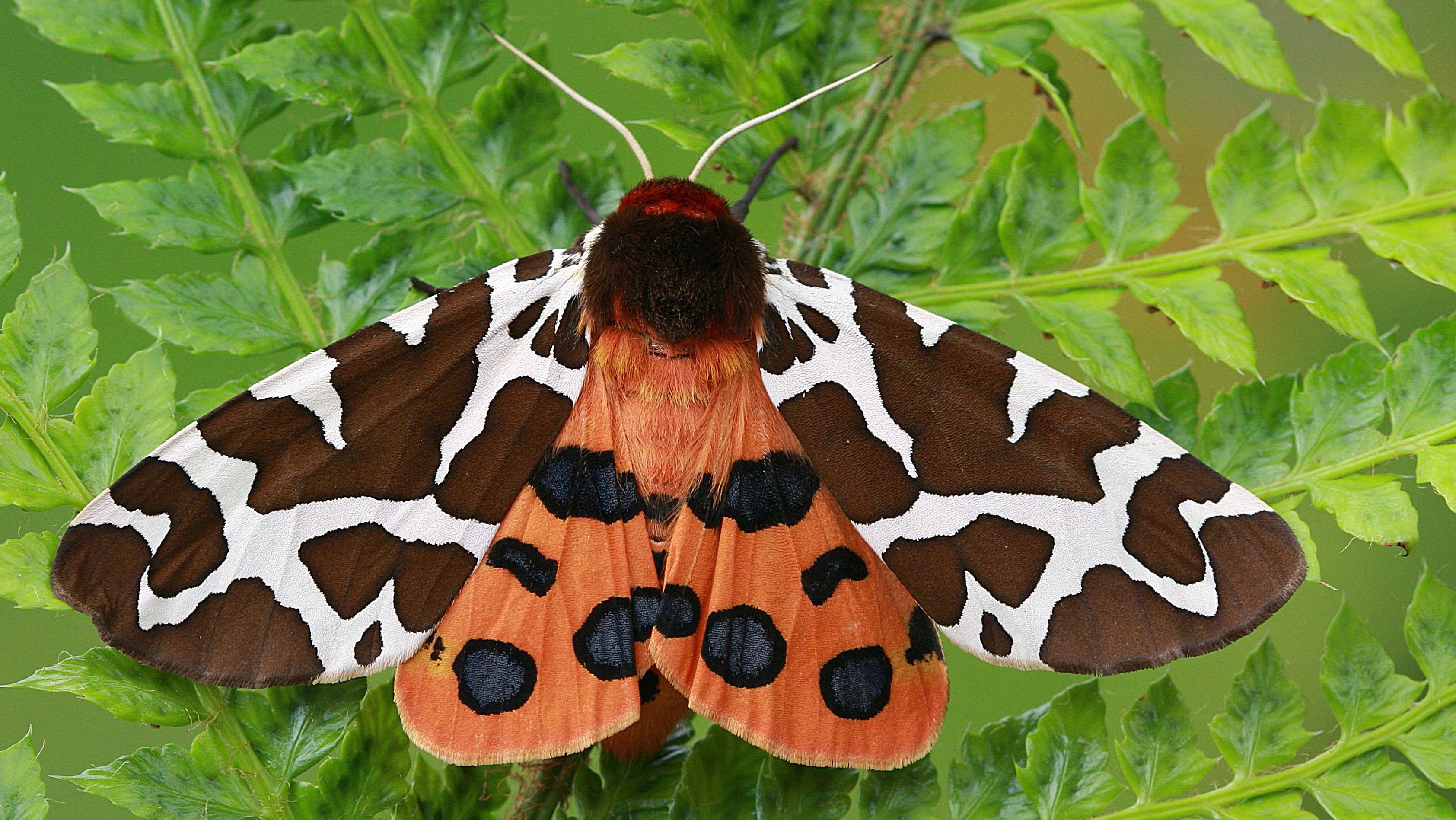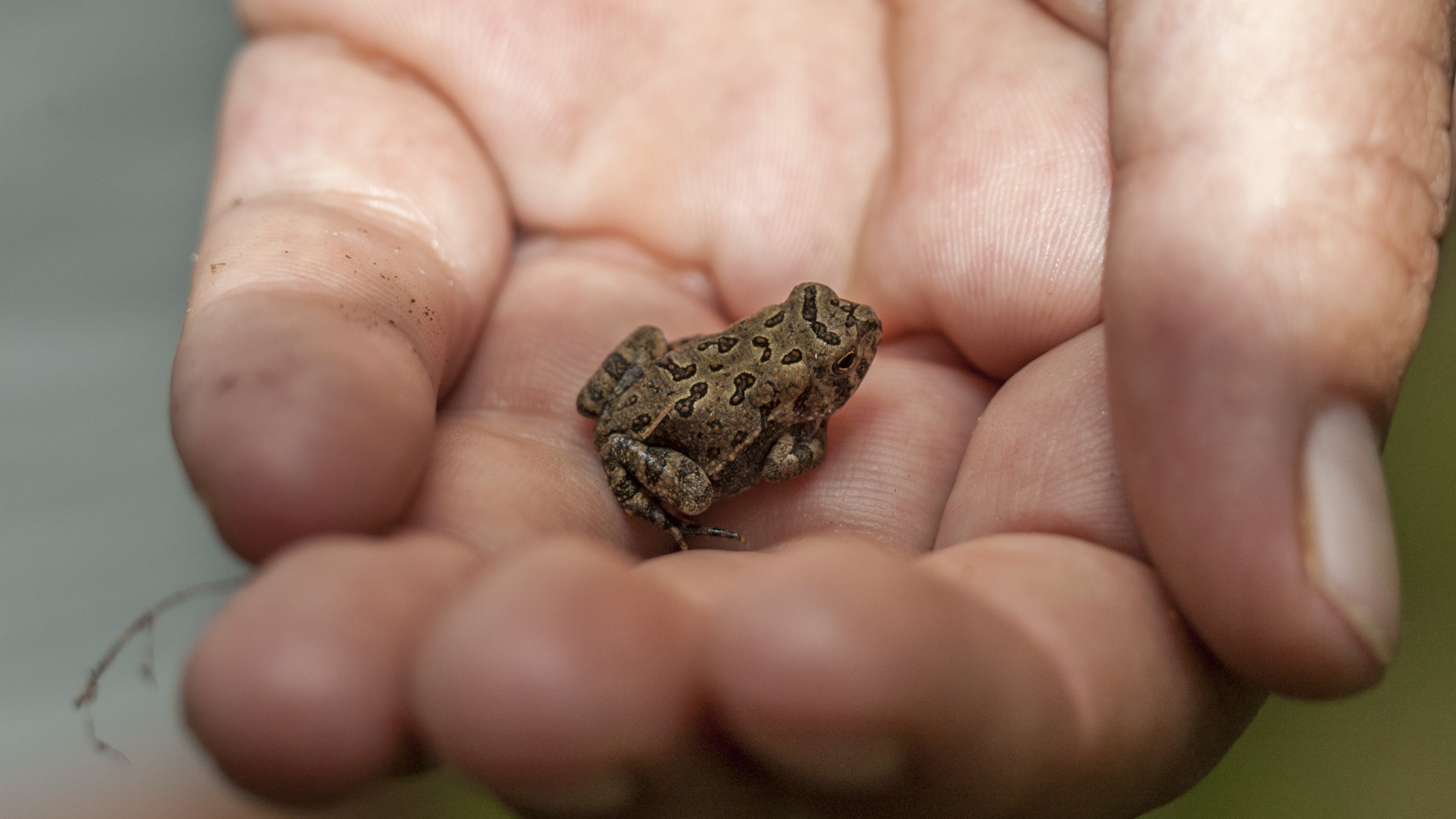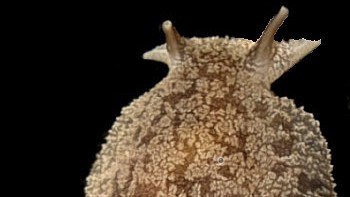32 unusual poisonous animals
You do not want to eat these odd toxic creatures.
Some animals are venomous, meaning they create their own toxins that can sicken, paralyze or kill when injected via fangs or a stinger.
But there's another category of toxic creature: those that are poisonous. These animals can't inject their toxins, but they can be just as deadly if they're eaten — or even touched. Some of these species, such as the jewel-colored poison dart frog, are well known. But there are also a slew of surprising poisonous animals. Here are some strange creatures you should definitely not eat.
Regent whistler
The regent whistler (Pachycephala schlegelii) is a poisonous bird found in the jungles of Papua New Guinea. While this songbird's bright yellow feathers may look enticing, they're actually highly poisonous and contain batrachotoxin, a lethal toxin also found in the skin of poison dart frogs. Upon contact, the bird's batrachotoxin can lead to muscle cramps and cardiac arrest when consumed, according to a 2023 study published in the journal Molecular Biology.
Rufous-naped bellbird
Like the regent whistler, the rufous-naped bellbird (Aleadryas rufinucha) is another poisonous bird found in Papua New Guinea's jungles. Its combination of an olive-colored body, yellow throat, gray face and red crown is unique and not found on any other bird species. Its body and feathers also contain batrachotoxin, which, like the regent whistler, it acquires by eating a steady diet of toxic Choresine beetles, according to the 2023 study published in the journal Molecular Biology.
Hooded pitohui
Pitohuis are a genus of bird found in New Guinea. They look harmless, but in several species, the skin and feathers contain neurotoxins similar to those found in poison dart frogs.
The batrachotoxins found in the hooded pitohui (Pitohui dichrous) can disrupt the nervous system, causing paralysis or cardiac arrest in large enough doses. There are no reports of anyone dying from contact with a hooded pitohui, though local hunters have long known to avoid the birds, according to Australian Geographic. Their neurotoxin was first identified scientifically in 1989, when California Academy of Sciences researcher Jack Dumbacher trapped some of the birds and found that when he handled them, his skin began to tingle and burn. The closely related northern variable pitohui (Pitohui kirhocephalus) is also toxic.
Scientists aren't sure why pitohuis are poisonous. The toxins may deter predators, or they may be a defense against parasites; a 1999 study in the journal The Auk found that the batrachotoxins deterred and killed lice.
Get the world’s most fascinating discoveries delivered straight to your inbox.
Choresine beetles
Pitohuis don't generate their poisons on their own. Scientists think the birds accumulate toxins from their diet — a common strategy for poisonous birds. In the case of pitohuis, the source is likely beetles from the genus Choresine, according to 2004 research by Dumbacher.
These beetles are just 0.23 inch (6 millimeters) long and have iridescent blue-green coloring. They're consumed by pitohuis and are known by locals as "nanisani," a word also used to describe the tingling and numbing sensation caused by touching pitohuis.
Brush bronzewing
The brush bronzewing (Phaps elegans) is a species of Australian pigeon with a gorgeous splash of iridescent color on its wings. After reports of animals dying after eating these beautiful birds, scientists learned that brush bronzewings' flesh is toxic.
That's because the brush bronzewing can safely consume the poisonous seeds of Gastrolobium plants and accumulate the toxins in its flesh. Other native Australian species, such as the brush-tailed possum (Trichosurus vulpecula) and boodie (Bettongia lesueur), both marsupials, have also been known to eat Gastrolobium seeds and poison their predators or scavengers.
Carolina parakeet
The Carolina parakeet (Conuropsis carolinensis) is no longer on anyone's menu. This brightly colored bird was once one of only three parrot species native to what is now the United States. It used to live in the eastern U.S., Midwest, and part of the Great Plains but went extinct in 1939, devastated by human hunting. Not only were the birds considered agricultural pests, but their feathers were prized for hats and other accessories, according to the National History Museum in London.
Interestingly, the Carolina parakeet may have been poisonous. The bird ate cockleburs (Xanthium strumarium), a thorny native plant that is itself toxic to many animals. The 19th-century naturalist James Audubon reported that dogs that ate the parakeets died. As with the brush bronzewing, the Carolina parakeet's diet may have protected the bird from predators.
Pacific newts
The four newts of the genus Taricha — the rough-skinned newt (Taricha granulosa), the red-bellied newt (Taricha rivularis), the Sierra newt (Taricha sierrae) and the California newt (Taricha torosa) — all found along the Pacific coast of North America, are small but deadly. Species in this genus contain tetrodotoxin, a neurotoxin that blocks signals between nerve cells. This leads to the paralysis of the muscles of the diaphragm, halting breathing and leading to death unless the individual seeks immediate medical intervention, such as being put on a ventilator.
There is at least one case of a person dying after consuming a rough-skinned newt. In a 1981 report in the Journal of the American Medical Association, doctors described the 1979 case of a 29-year-old man in Oregon who swallowed the newt on a dare and soon began to complain of numbness and tingling. Within two hours, his breathing stopped. Though his friends tried to revive him, the man died due to the newt's neurotoxin.
Garter snake
Garter snakes (Thamnophis sirtalis) have a mild venom and small fangs that are not dangerous to humans. But garter snakes are resistant to tetrodotoxin, meaning they can feed upon Pacific newts without dying. After a Pacific newt meal, a 2004 study found, toxins from the newts remain in the garter snake liver for at least a month. Three weeks after eating just one newt, the snakes had enough tetrodotoxin in their livers to kill any bird unlucky enough to try eating them, the research found.
Milkweed butterflies
Milkweed butterflies are beautiful but deadly. These butterflies, in the subfamily Danainae, include species like the orange-and-black common tiger butterfly (Danaus genutia) and the striped blue crow butterfly (Euploea mulciber). The most famous member is the monarch (Danaus plexippus).
Because these insects feed upon the toxic milkweed plant, they, too, carry toxins, particularly in the caterpillar stage. These toxins, called cardiac glycosides, typically disrupt the pumps in cell membranes that balance electrical charges within and outside cells, according to Science magazine. In large enough quantities, these toxins can cause nausea, vomiting, vision changes and fatal disruptions to the heart rhythm, according to the Cleveland Clinic.
Barracudas
The toothy barracuda is scary enough in its own right. But eating the flesh of these long, silvery fish can sometimes cause poisoning.
Barracudas aren't toxic on their own, but if they consume fish that have been chowing down on the dinoflagellate Gambierdiscus toxicus, a single-celled marine organism, the dinoflagellate's toxins can accumulate in the barracudas' flesh. People who eat contaminated barracuda flesh contract a disease called ciguatera, marked by diarrhea, cramps, vomiting, heart arrhythmias and pain. Most people recover, but 1% of reported cases in the Pacific region lead to death, according to the Woods Hole Oceanographic Institution. However, the actual mortality rate is likely lower, as many cases go unreported.
Greenland shark
The Greenland shark (Somniosus microcephalus) is a strange creature. The longest-living vertebrate species, which can survive for hundreds of years, lives in the deep, cold waters of the Arctic and North Atlantic. They're slow-moving giants, growing up to 24 feet (7.3 meters) long and weighing up to 2,645 pounds (1,200 kilograms).
To survive in very cold temperatures and under high water pressure, Greenland sharks stabilize their proteins with a compound called trimethylamine oxide (TMAO). When digested, TMAO breaks down into trimethylamine (TMA), according to 1991 research in the journal Toxicon. TMA is a neurotoxin that causes intoxicating effects similar to those of alcohol, according to the Florida Museum. Humans and sled dogs who have eaten the shark's meat are sometimes referred to as "shark drunk" by Greenland natives. Drying the shark's meat over several months, however, neutralizes the toxins.
Blue-capped ifrit
The blue-capped ifrit (Ifrita kowaldi) is a colorful rainforest bird endemic to New Guinea. Locals call it the "bitter bird," or "slek-yakt," according to a 2000 article in the journal BioScience, because eating the bird causes tingling and numbness in the mouth, sort of like the effect of biting into a hot chili pepper.
The culprit is the same batrachotoxin that makes pitohuis toxic, most likely from the same dietary source (Choresine beetles). The toxins are most prevalent on the legs, belly and breast feathers, leading to speculation that they might rub off on the birds' eggs, helping protect them from predators, according to 2000 research published in the journal Proceedings of the National Academy of Sciences.
Quail
The common quail (Coturnix coturnix) is an unassuming brown-and-white bird that is often hunted as game around the Mediterranean. On rare occasions, though, the meat from these birds can be toxic.
The disorder caused by consuming quail meat is called coturnism. Symptoms include muscle pain, nausea and vomiting, caused by rhabdomyolysis, or the breakdown of muscle cells, according to a 2008 article in The Journal of Emergency Medicine. Coturnism may even get a mention in the Hebrew Bible, with the Book of Numbers describing a mass poisoning of Israelites after a feast of quail.
Poisonings usually happen during quail migration season, suggesting that they occur only when quail are feeding on a particular toxic plant. Scientists aren't sure which plant is to blame, but they suspect that the most likely culprit is hemlock, according to a 2004 case report in the Canadian Medical Association Journal.
Cinnabar moth
A poisonous moth? Yes. The cinnabar moth (Tyria jacobaeae), found in Europe and Asia, has wings decorated with bright-red patches that scream, "Do not eat!" And for good reason. Moth larvae feed on ragwort plants and incorporate bitter alkaloid compounds from the plants into their tissues. This makes them unpalatable to birds, mammals, reptiles and amphibians, though some arthropods still eat the larvae and adult moths, according to a 1968 article in the journal Nature.
Because ragwort is toxic to livestock, cinnabar moths have been introduced around the world to control the spread of the plant.
Shrikethrush
The Arafura shrikethrush (Colluricincla megarhyncha) is found in forests in New Guinea and Australia. Like ifrits, these birds may contain batrachotoxins, though the concentration likely depends on their diet. A 2000 study in the journal Proceedings of the National Academy of Sciences found that of two specimens of little shrikethrush tested, one had trace amounts of batrachotoxins in its body, while the other did not.
Palythoa
Palythoa is a genus of cnidarian, the soft-bodied animals that include corals and jellyfish. They look a bit like frilly undersea mushrooms, with their rings of tentacles surrounding a disc-like mouth. Toxins are standard among cnidarians, which sting and paralyze prey, but Palythoa species are known for their particularly nasty poison, palytoxin. Palytoxin breaks down red blood cells, causes heart arrhythmias and muscle spasms, and can be fatal in small doses. There is no antidote, according to the Government of South Australia's health agency.
One toxin-producing species, Palythoa toxica, is native to Hawaii and is known in the indigenous Hawaiian language as "limu-make-o-Hana," or "seaweed of death from Hana," according to the American Chemical Society. Aquarium hobbyists have reported poisoning symptoms from handling suspected Palythoa polyps. Even inhaling coral dusts or aerosolized coral during aquarium cleaning can cause respiratory symptoms.
Blue-ringed octopus
Most species of octopus protect themselves with camouflage, ink and the ability to cram their soft bodies into rock crevices. But four species in the Pacific and Indian oceans — the greater blue-ringed octopus (Hapalochlaena lunulata), the southern blue-ringed octopus (Hapalochlaena maculosa), the blue-lined octopus (Hapalochlaena fasciata) and the blue-ringed octopus (Hapalochlaena nierstraszi) — take their defenses further. These cephalopods contain the deadly neurotoxin tetrodotoxin, making them one of the most dangerous marine animals.
Just handling a blue-ringed octopus can be deadly: According to WebMD, even a milligram of the tetrodotoxin in an octopus' saliva can kill a human. Bites are rare, though, with only three confirmed deaths, according to a 2008 study in the journal Clinical Toxicology. Because the tetrodotoxin is found throughout the octopus's tissues, not just in specific venom glands, it is poisonous as well as toxic, making it an unappetizing meal for predators.
Flamboyant cuttlefish
Another unappetizing cephalopod, the flamboyant cuttlefish (Metasepia pfefferi), can be found along shallow, muddy ocean bottoms in the Indo-Pacific region. Its flame-like coloration and frilly body shape provide an eye-catching warning against consumption.
The flamboyant cuttlefish is the only cuttlefish species known to contain a toxin, according to the Monterey Bay Aquarium. Researchers have found tetrodotoxin in the cuttlefish's tissues, according to Science Friday. However, there is still debate over whether the cuttlefish are toxic enough to deter predators with this tetrodotoxin, as plenty of animals do eat the cuttlefish with no sign of adverse effects.
Colorado River toad
Plenty of amphibians excrete toxins through their skin as protection against predators, but none may be as strange as the Colorado River toad, also known as the Sonoran desert toad (Incilius alvarius). This toad, found in the southwestern United States and northern Mexico, produces a hallucinogen called 5-methoxy-N,N-dimethyltryptamine (5-MeO-DMT).
5-MeO-DMT can be toxic when ingested, especially to the types of predators that normally might eat the toads, such as coyotes. According to the Arizona-Sonora Desert Museum, a mouthful of toad can kill a typical pet dog. However, when dried and smoked, 5-MeO-DMT is a potent psychedelic that researchers are now studying as a potential mental health treatment. However, this interest could be bad for the toad, as illegal collection of their toxins might threaten the species, The New York Times reported. (Luckily, there are ways to synthesize the chemical artificially for psychiatric research.)
Blister beetles
Look, but don't touch beetles of the family Meloidae. These beetles are popularly known as "blister beetles" because they secrete cantharidin, a toxin that causes — you guessed it — blistering. In fact, cantharidin can be beneficial, too: It's one of the active ingredients in wart-removal treatments. The compound, also known as "Spanish fly," is rumored to be an aphrodisiac, but it's more likely to ignite your intestines than your libido.
Blister beetles typically don't cause humans any problems, though there is at least one report of a human fatality, a fisherman who, in 1954, attempted to use cantharidin to attract fish, pricked his thumb on a fishhook and popped his cantharidin-contaminated thumb into his mouth, ingesting a fatal dose, according to McGill University's Office for Science and Society. Blister beetles present a deadly threat to livestock. These beetles are found in alfalfa fields, according to the University of Colorado agricultural extension, and when they are inadvertently crushed during harvest and processing, they can end up in the hay fed to horses, cattle and sheep. In these animals, cantharidin poisoning yields symptoms such as diarrhea and bloody urine, and can be fatal.
Hawksbill sea turtle
The Hawksbill sea turtle (Eretmochelys imbricata) is an endangered species found in tropical oceans. They're not picky eaters, chowing down on everything from algae to marine invertebrates to seagrasses. Their favorite food is sponges, and an adult Hawksbill can eat 1,200 pounds (544 kg) of sponges a year, according to the National Wildlife Federation.
Some of these sponges are toxic, which doesn't bother the Hawksbill. But the toxins can accumulate in the turtles' fat stores, making their meat poisonous. In 2010, four children and two adults died, and 95 other adults fell ill, in Micronesia after consuming contaminated turtle meat.
Arrow-poison beetle
Diamphidia nigroornata, also known as the Bushman arrow-poison beetle, excretes an interesting poison. It does not harm humans when ingested, but if injected into the bloodstream, it breaks down the blood cells by damaging their protective membranes, according to 1990 research. The San people of southern Africa use the extract to poison their arrows.
Puffer fish
Some puffer fish are perfectly fine to eat. Others are among the most poisonous potential meals on Earth, thanks to their store of that now-familiar neurotoxin tetrodotoxin.
The toxin is found mainly in the liver and sex organs, according to the Centers for Disease Control and Prevention, so trained chefs can prepare toxic puffer fish without poisoning diners. The flesh of many species in this family, Tetraodontidae, is considered a delicacy. However, mistakes in preparation can be deadly. According to research published in 2018 in the journal Food Control, there were 106 cases of tetrodotoxin poisoning in China between 2003 and 2008, causing 16 deaths.
Battus butterflies
Butterflies in the genus Battus, known colloquially as swallowtail butterflies, are found in the Americas. The larvae of these winged insects feed off pipevine plants in the genus Aristolochia. All parts of these plants are toxic to humans, according to the Lady Bird Johnson Wildflower Center. However, Battus larvae have no problem chowing down on the plants, incorporating their toxins so that they taste disgusting to predators.
Spur-winged goose
The spur-winged goose (Plectropterus gambensis) is found in the sub-Saharan wetlands of Africa and is identifiable by its stark black-and-white markings and bright-red face. Oddly enough for a waterfowl, some populations of these geese are toxic. Like the hooded pitohui, they accumulate cantharidin from blister beetles, according to a 2022 paper in the Journal of Medical Toxicology. The toxin makes a meal of spur-winged goose singularly unappetizing, with possible symptoms including blistering of the mouth and throat, abdominal pain and cramping, and dehydration from cells leaking fluid.
Eurasian hoopoes
While many toxic birds get their poisons from their diet, the Eurasian hoopoe (Upupa epops) has its own poison factory. Birds have a gland over their tails called the uropygial gland, which normally makes oils that the animals use to preen their feathers. In Eurasian hoopoes, this gland is colonized by bacteria of the genus Enterococcus, which make a variety of nasty compounds, such as dimethyl sulfide. Dimethyl sulfide is only hazardous in very large doses, and humans don't eat Eurasian hoopoes anyway, but the compound does have a disagreeable cabbage-like odor.
According to the 2022 Journal of Medical Toxicology paper, there may be other bacteria in the hoopoe's uropygial gland that add volatile (read: stinky) chemicals to the mix. Researchers sometimes say their hands smell bad for hours after handling the birds.
Boxfish
Boxfish (Ostracion cubicum) look like cartoon characters come to life, with their strangely angular bodies and bright polka-dot coloration. These fish are menaces to those around them, however. When threatened, boxfish excrete a mucousy toxin that breaks down red blood cells and is deadly to potential predators, according to a 1964 study in the journal Science.
In the ocean, this toxin disperses pretty quickly, meaning the boxfish is only a threat to the fish and other marine animals in its immediate proximity. But in aquariums, where the toxin can recirculate indefinitely, boxfish sometimes cause sudden death in their tankmates.
Moray eel
Like barracuda, moray eels are large predators that are high up the food chain. And like barracuda, this means they sometimes accumulate the marine plankton toxins that cause the disease ciguatera in their own flesh, making them potentially deadly to eat.
Some researchers have speculated that widespread ciguatera poisoning prompted the early Polynesian voyages of discovery between 1000 and 1450 that spread humans throughout the Pacific islands. According to a 2009 study, archaeological evidence suggests shifts in diet after 1450, and ciguatera poisoning events are linked to large-scale ocean circulation changes, suggesting that the early explorers of the Pacific may have been seeking safer food sources when they set sail for new islands.
Corroboree frogs
Most poisonous frogs get their toxins from their diet. But the southern corroboree frog (Pseudophryne corroboree) and the northern corroboree frog (Pseudophryne pengilleyi) are different. These native Australian species, found only in New South Wales and the Australian Capital Territory, make their own poisons.
This toxin, first reported in 1990 in the Journal of Natural Products, is an alkaloid, similar to poisons found in many poison frogs that borrow these chemicals from the insects they eat. But even in captivity, when fed a diet of insects without the toxin, corroboree frogs remained poisonous, researchers found, indicating that they synthesize the poison themselves.
Garden tiger moth
The garden tiger moth (Arctia caja) drapes itself in color to warn potential predators that it makes a nasty snack. This moth is found in the U.S., Canada and Europe, and is part of the large moth family Erebidae, which is known for containing many toxic species.
As caterpillars, these insects are known for their woolly appearance; their hairs can be irritating to the skin (or mouths of potential predators). Both caterpillars and adults contain neurotoxic alkaloids that they acquire from plants in their diet.
Fowler's toad
The mottled brown-gray-green Fowler's toad (Anaxyrus fowleri) doesn't look like a toxic creature. It lacks the brilliant coloration of other poisonous amphibians, such as the poison dart frog. But this toad, which can scarf down stinging velvet ants without ill effects, causes nasty indigestion in anything that might consider targeting it as a meal. The toad secretes a noxious substance called bufotoxin from the warts on its back to deter predators, according to Animal Diversity Web, and the toxin is potent enough to kill small animals.
Gray side-gilled sea slug
A spate of mysterious dog poisonings on beaches near Auckland, New Zealand, in 2009 turned out to be the work of the gray side-gilled sea slug (Pleurobranchaea maculata). The slug, its eggs and its larvae all contain the potent poison tetrodotoxin, according to the Auckland Museum.
These gray-and-brown sea slugs grow just 4 inches (10 centimeters) long and are found in New Zealand, Australia, Japan, Sri Lanka and possibly other regions in the Pacific, according to the museum. Half a teaspoon of sea slug would be enough to kill a 165-pound (75 kg) human.

Stephanie Pappas is a contributing writer for Live Science, covering topics ranging from geoscience to archaeology to the human brain and behavior. She was previously a senior writer for Live Science but is now a freelancer based in Denver, Colorado, and regularly contributes to Scientific American and The Monitor, the monthly magazine of the American Psychological Association. Stephanie received a bachelor's degree in psychology from the University of South Carolina and a graduate certificate in science communication from the University of California, Santa Cruz.
